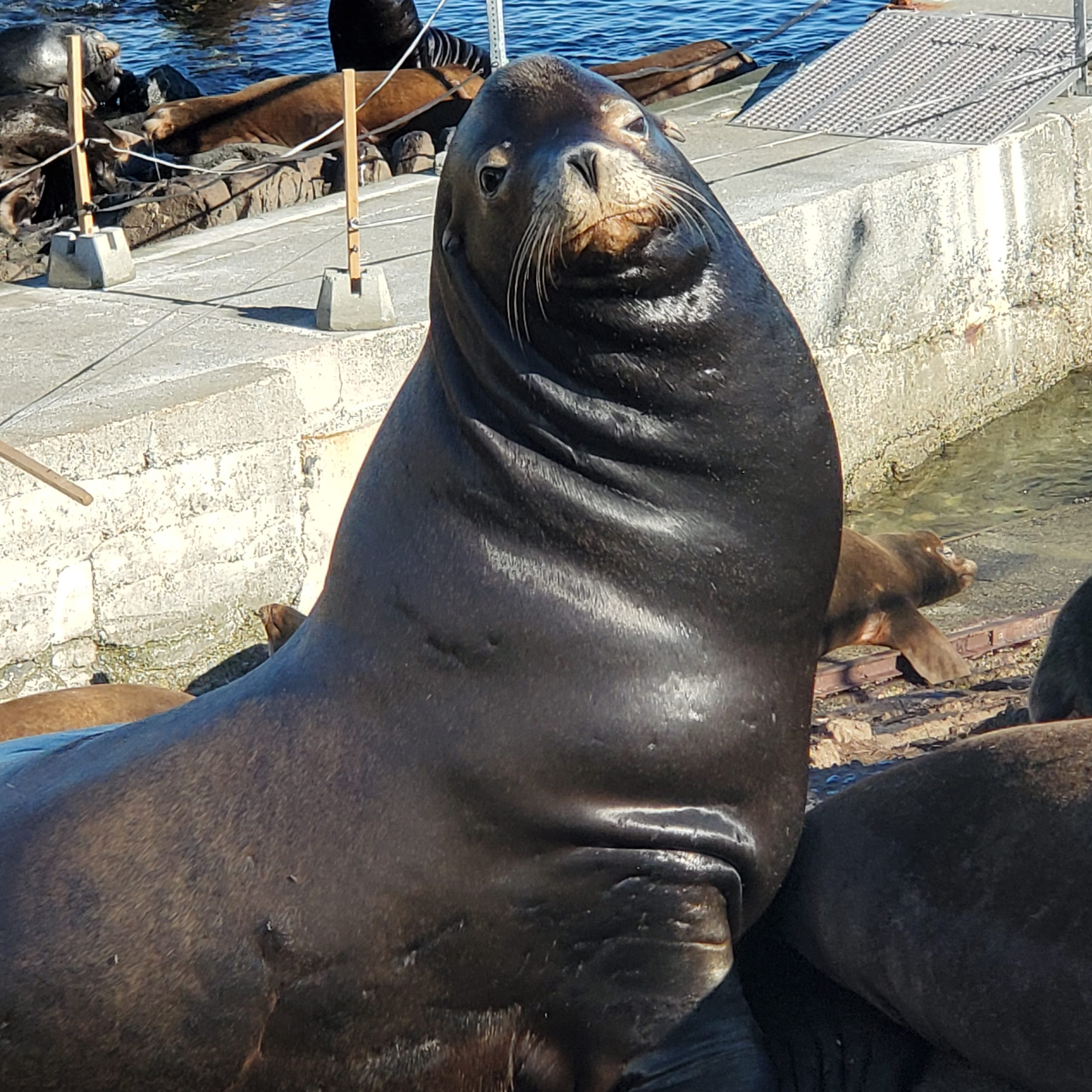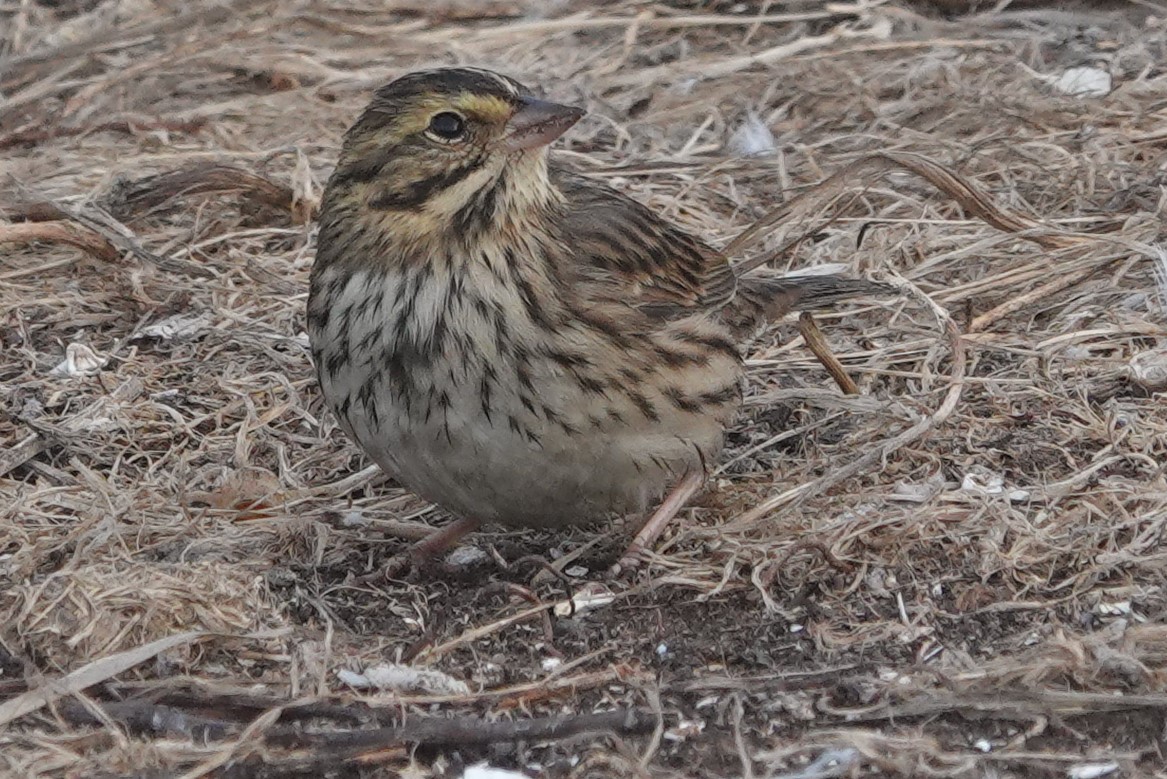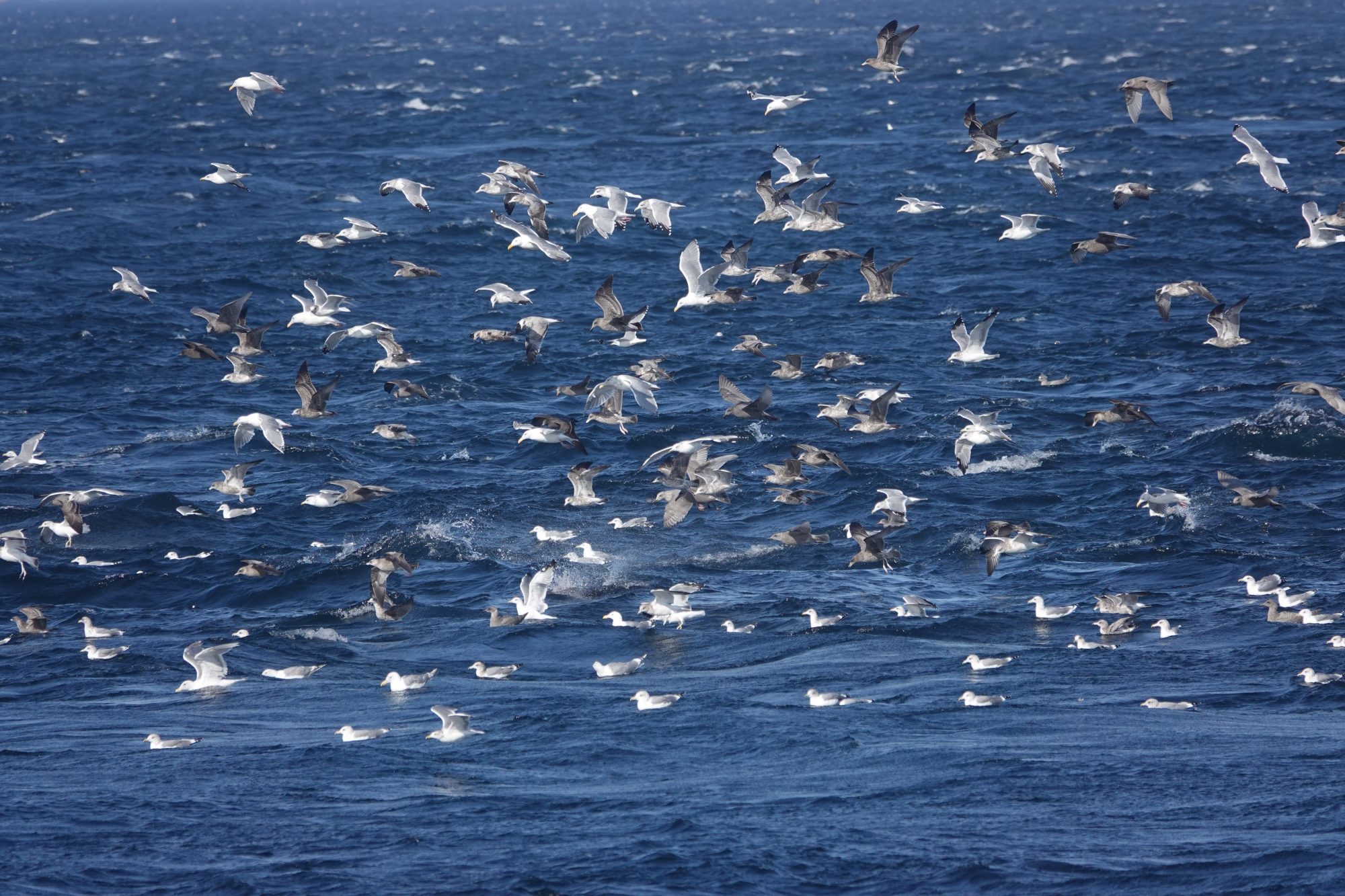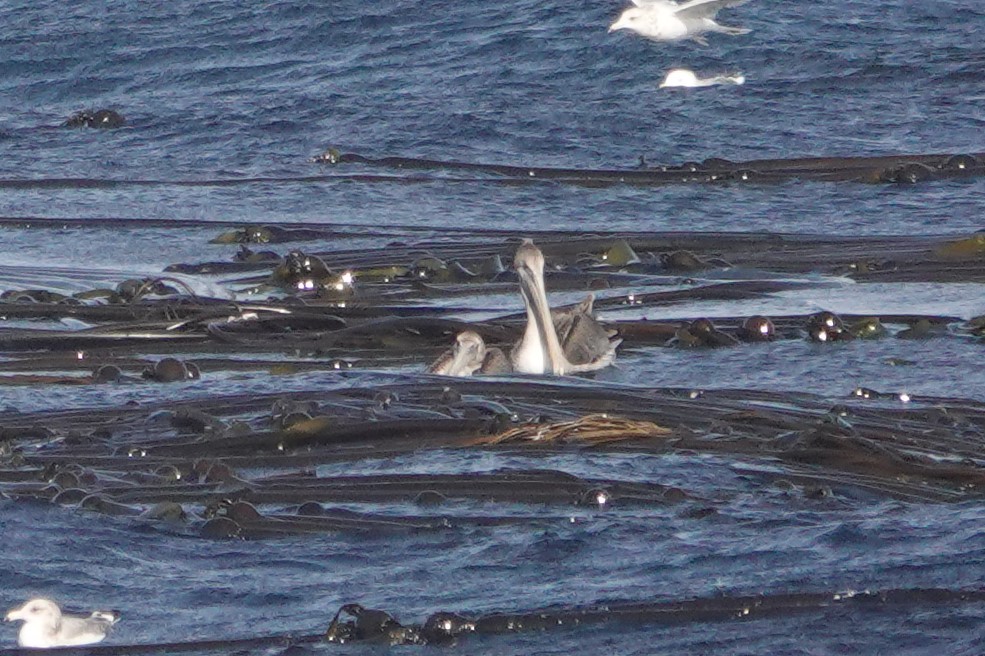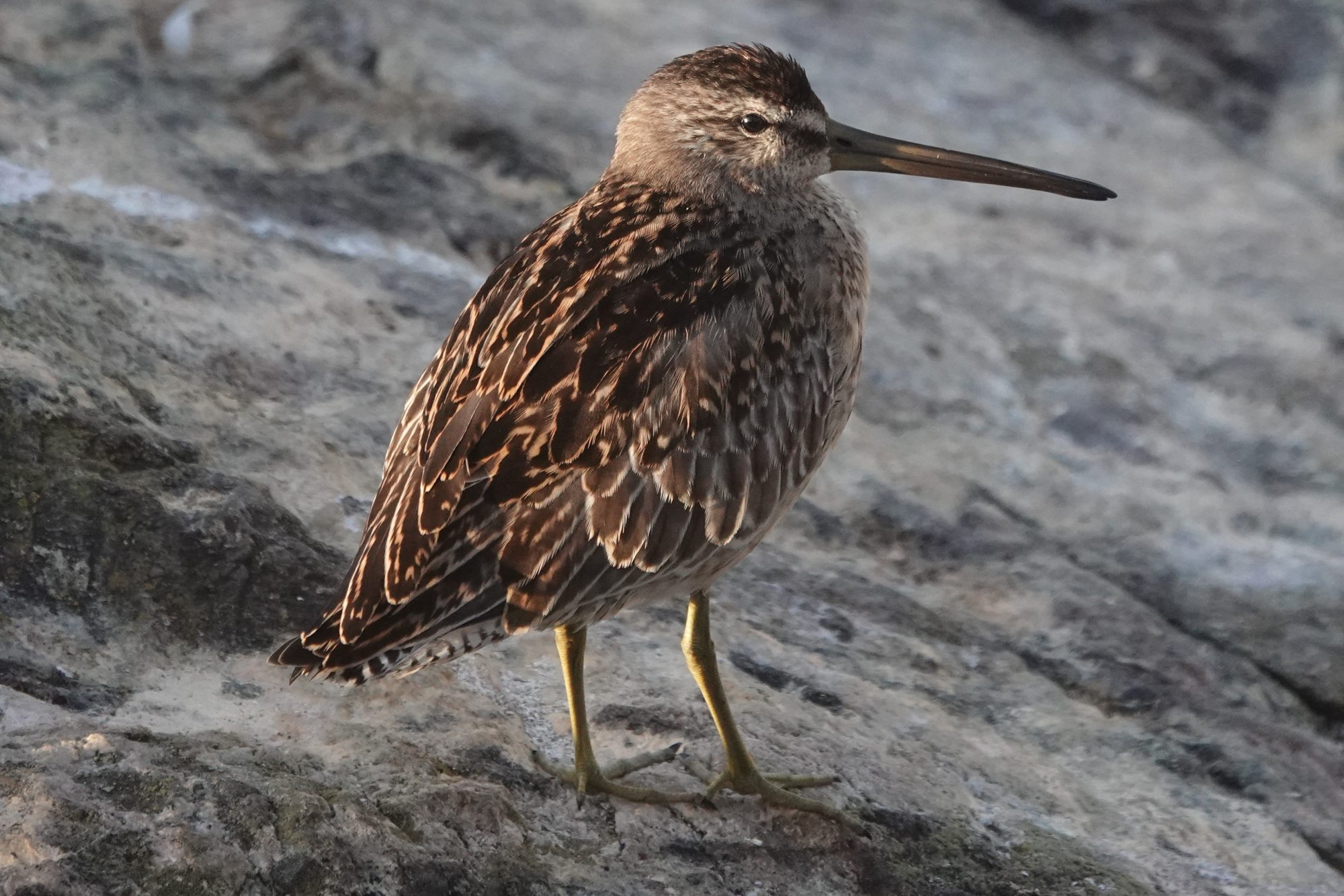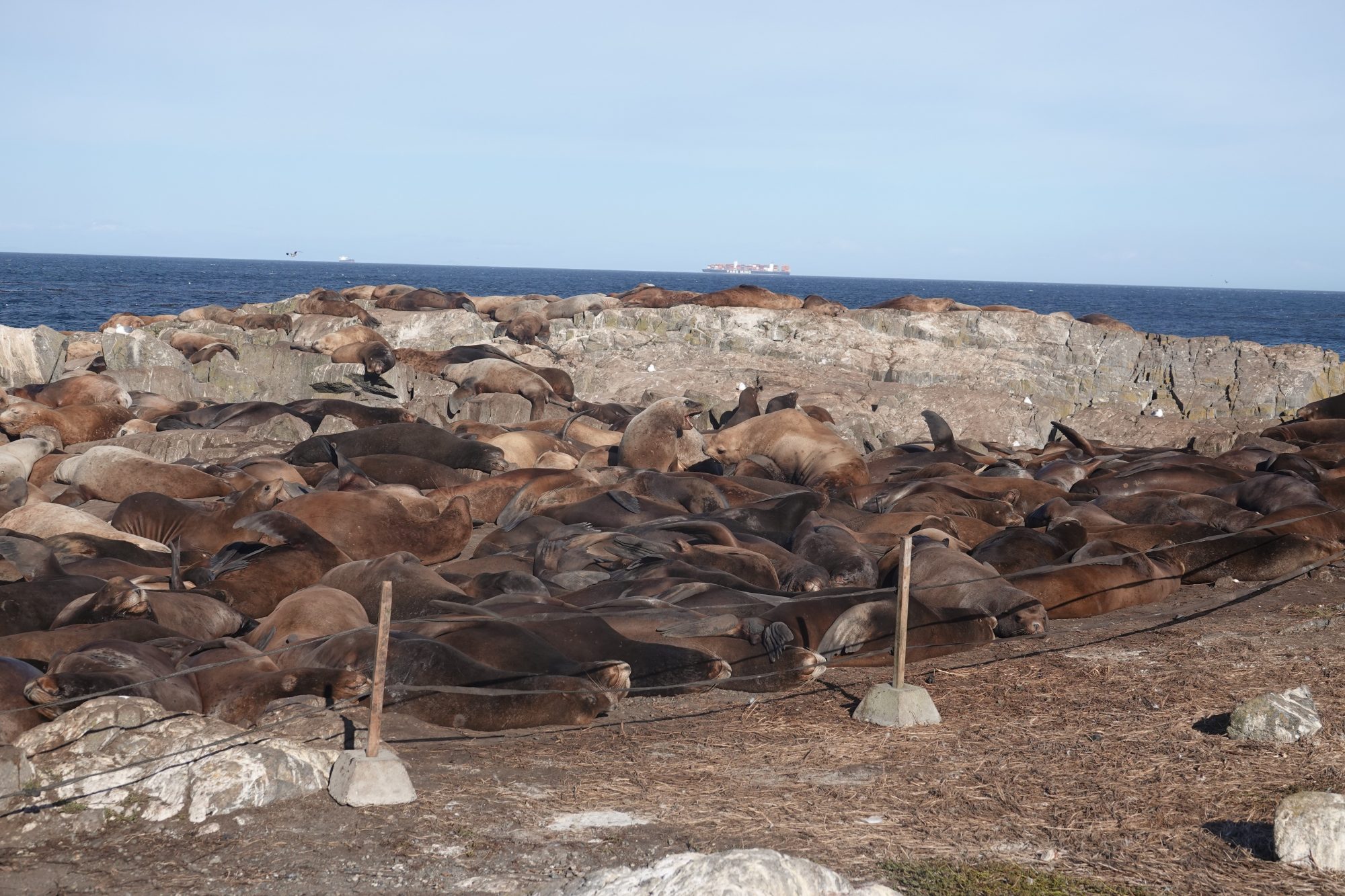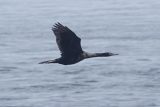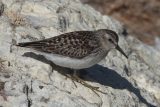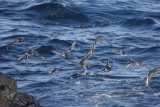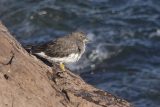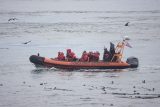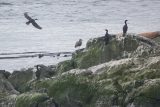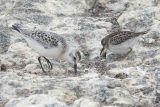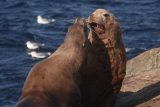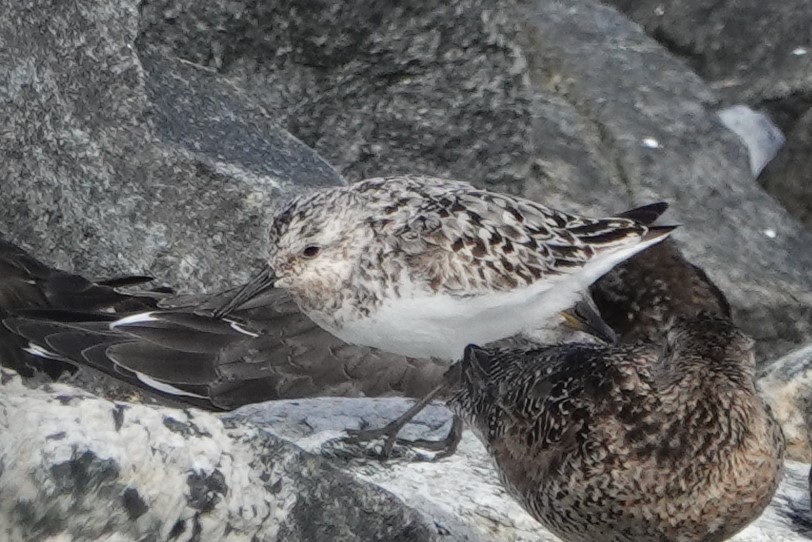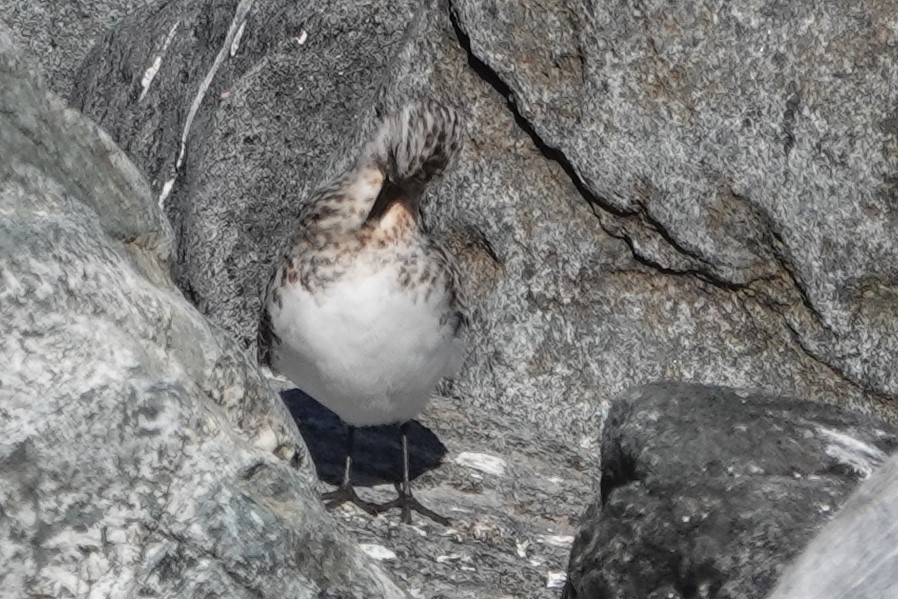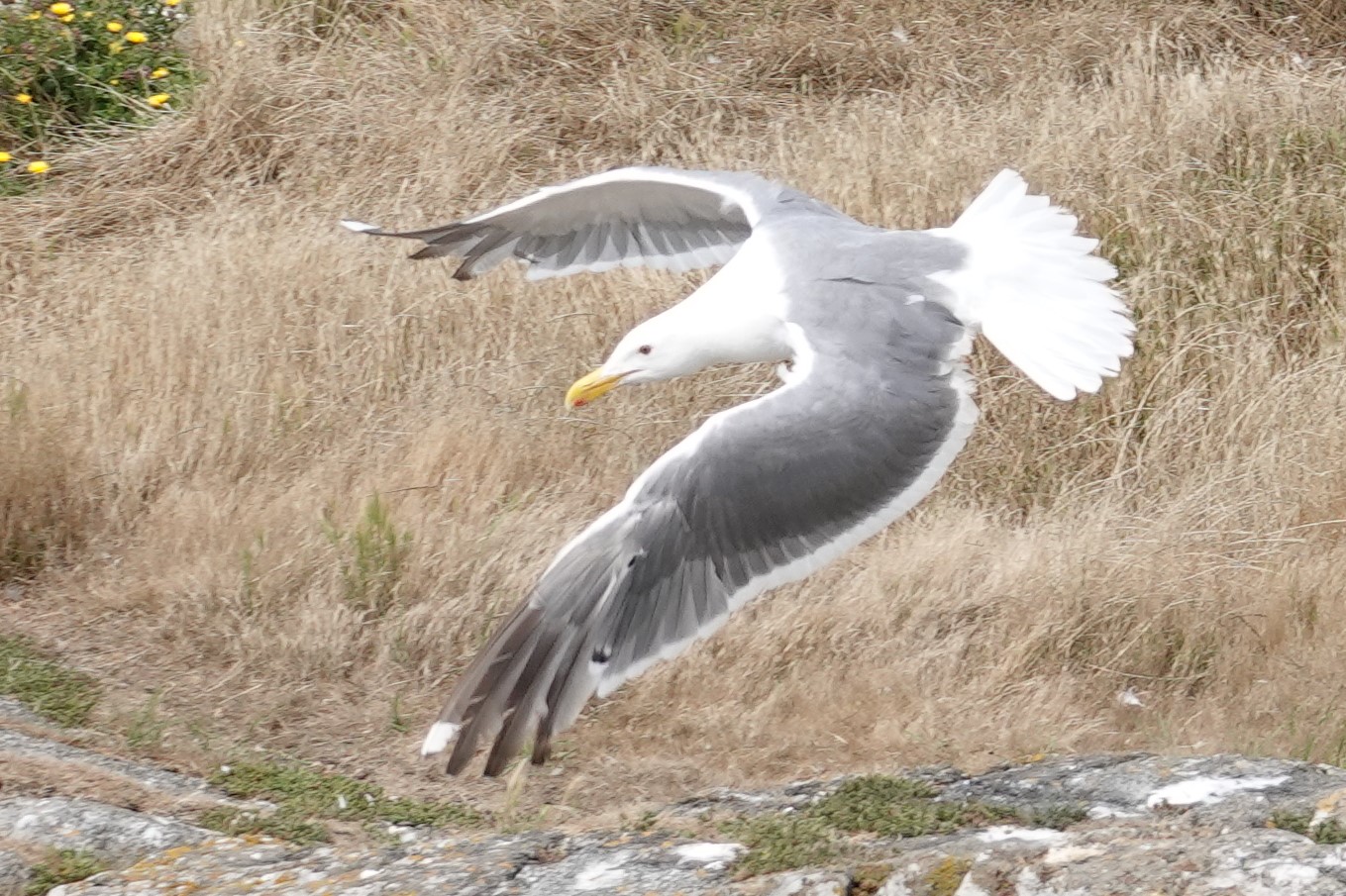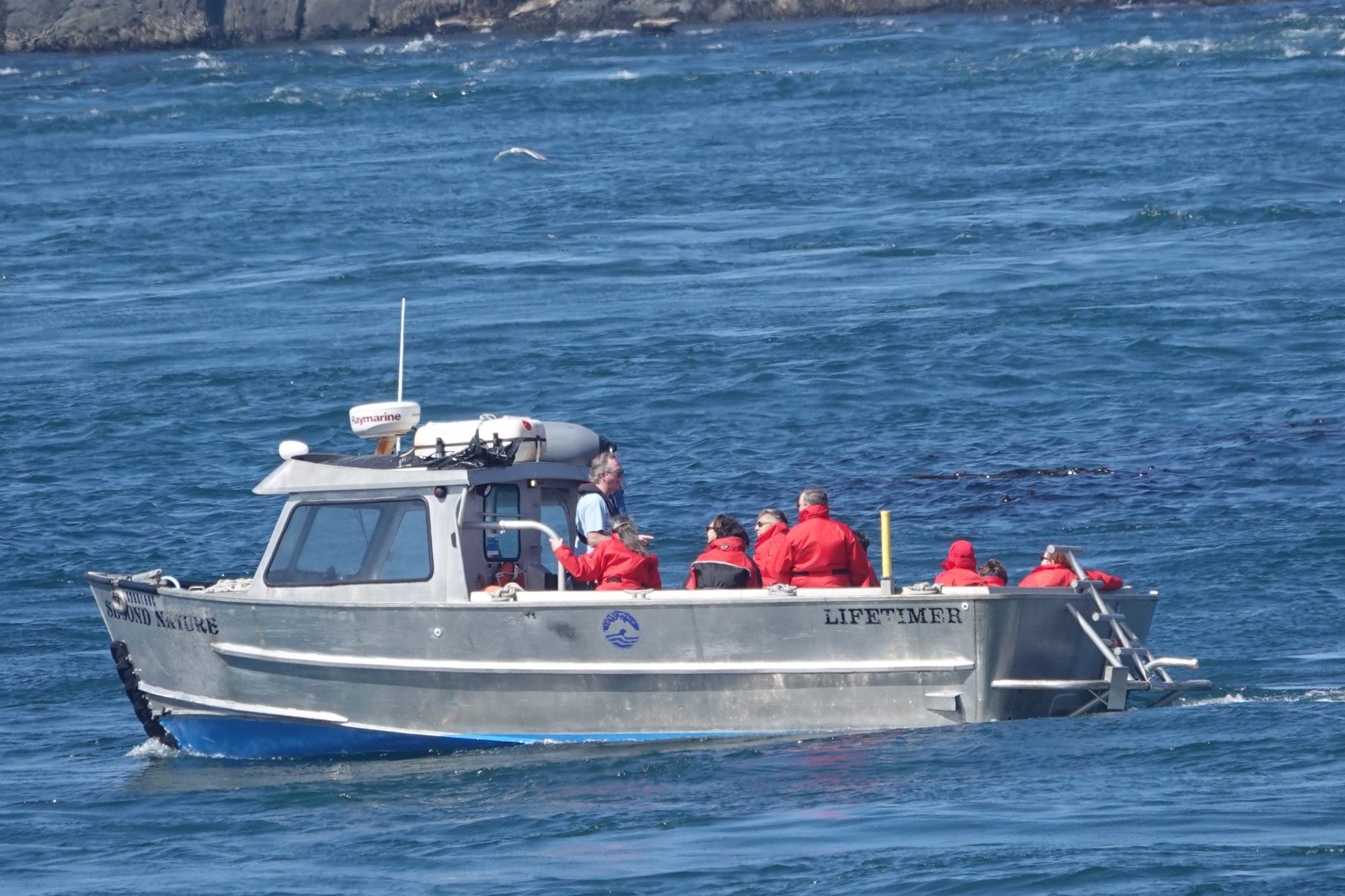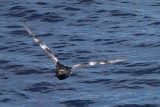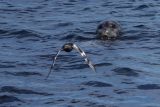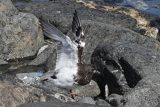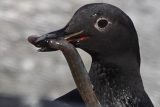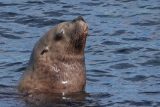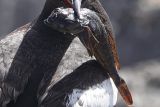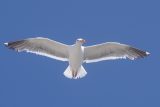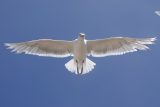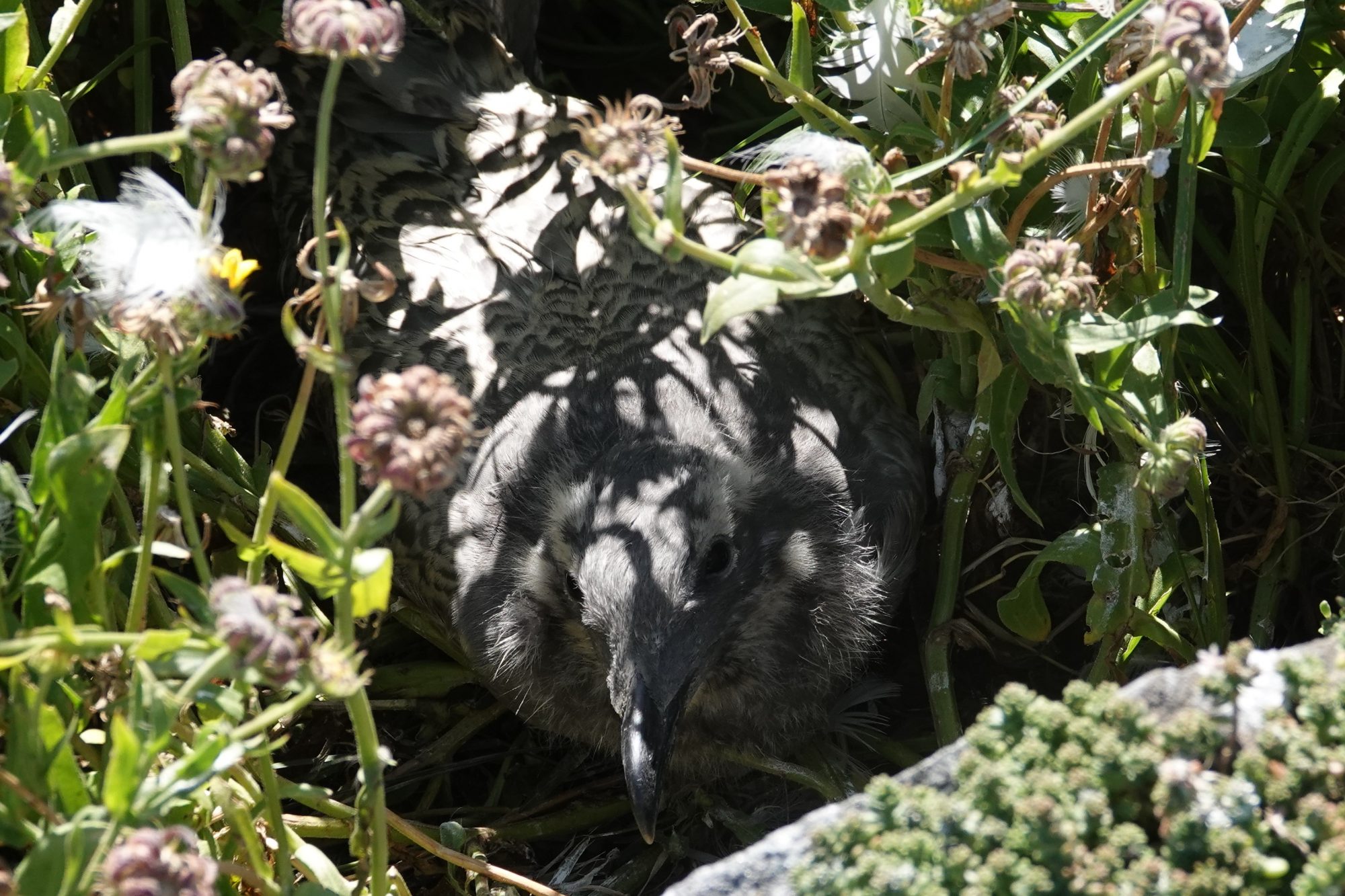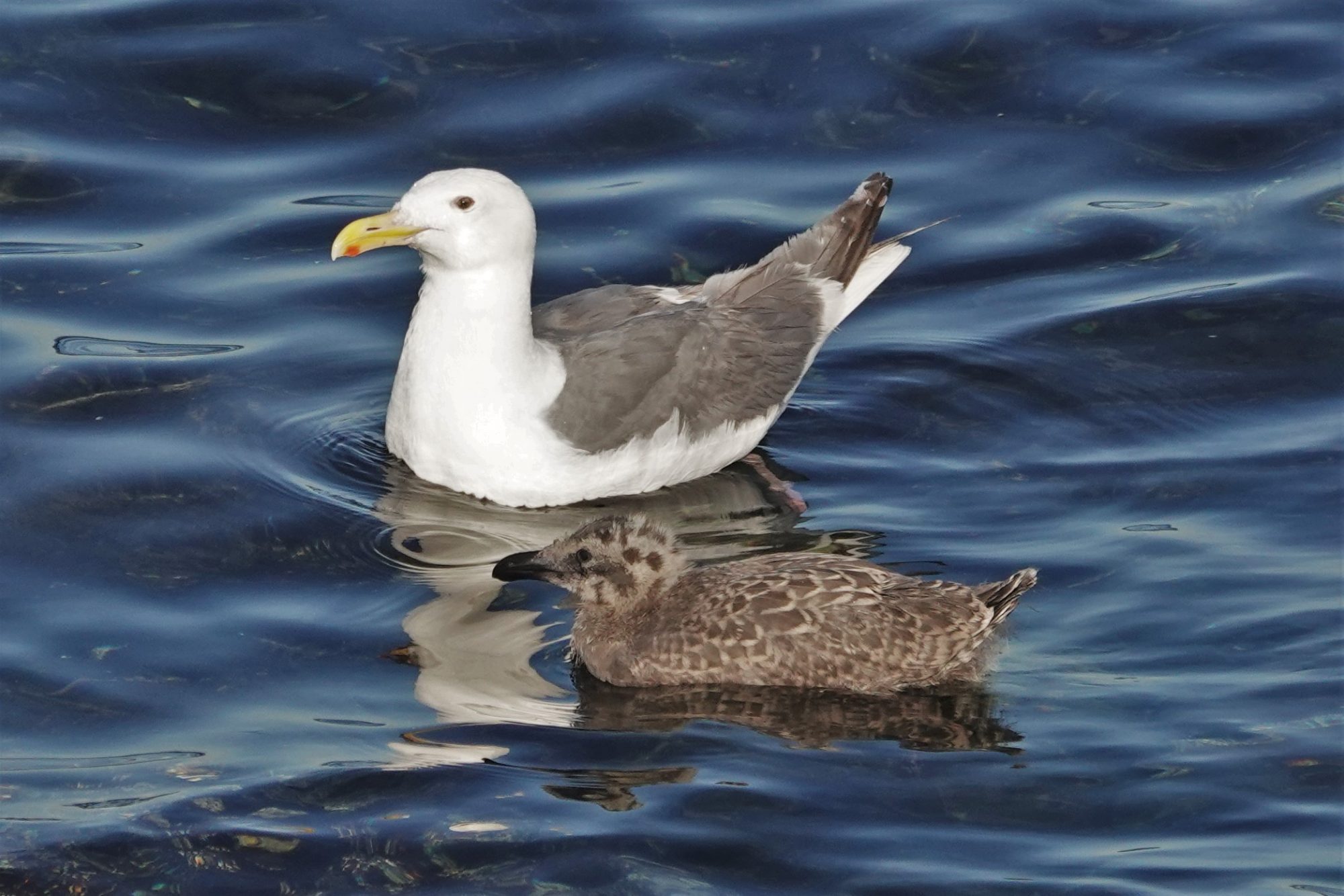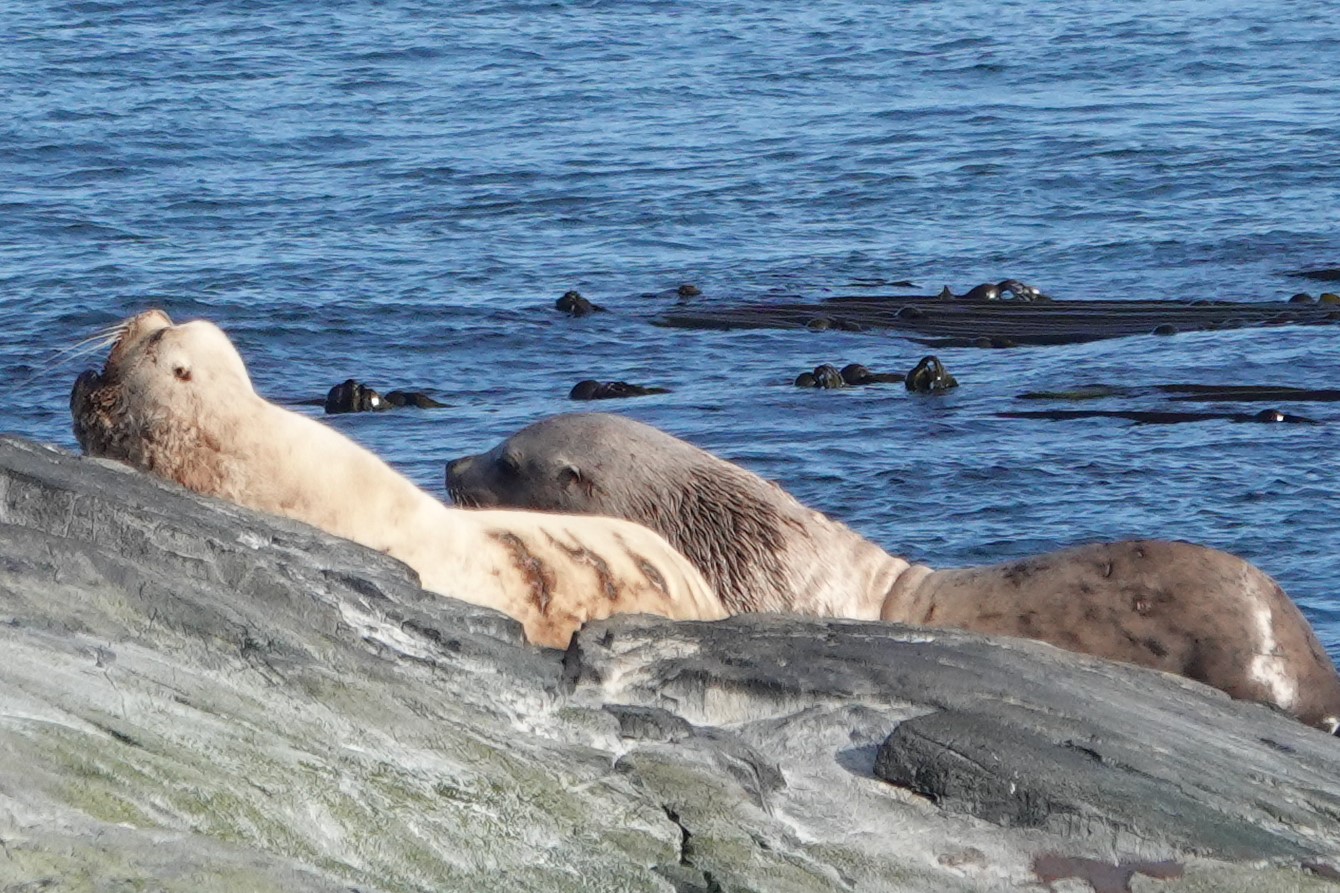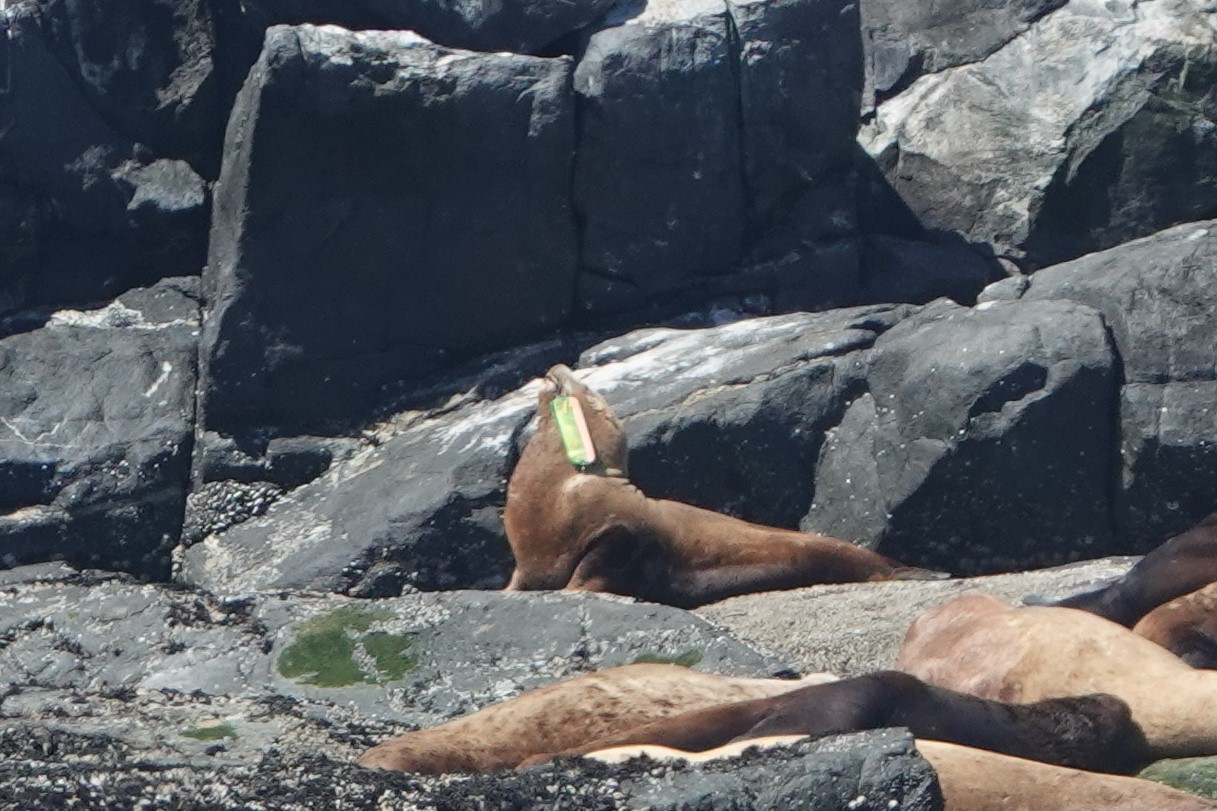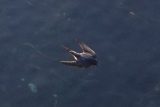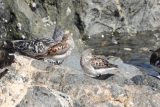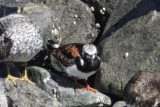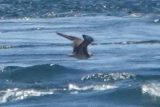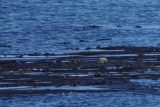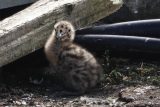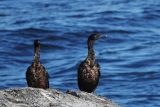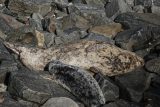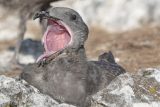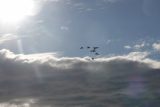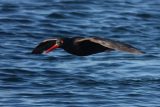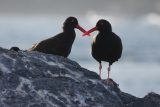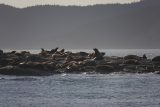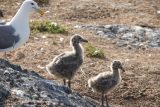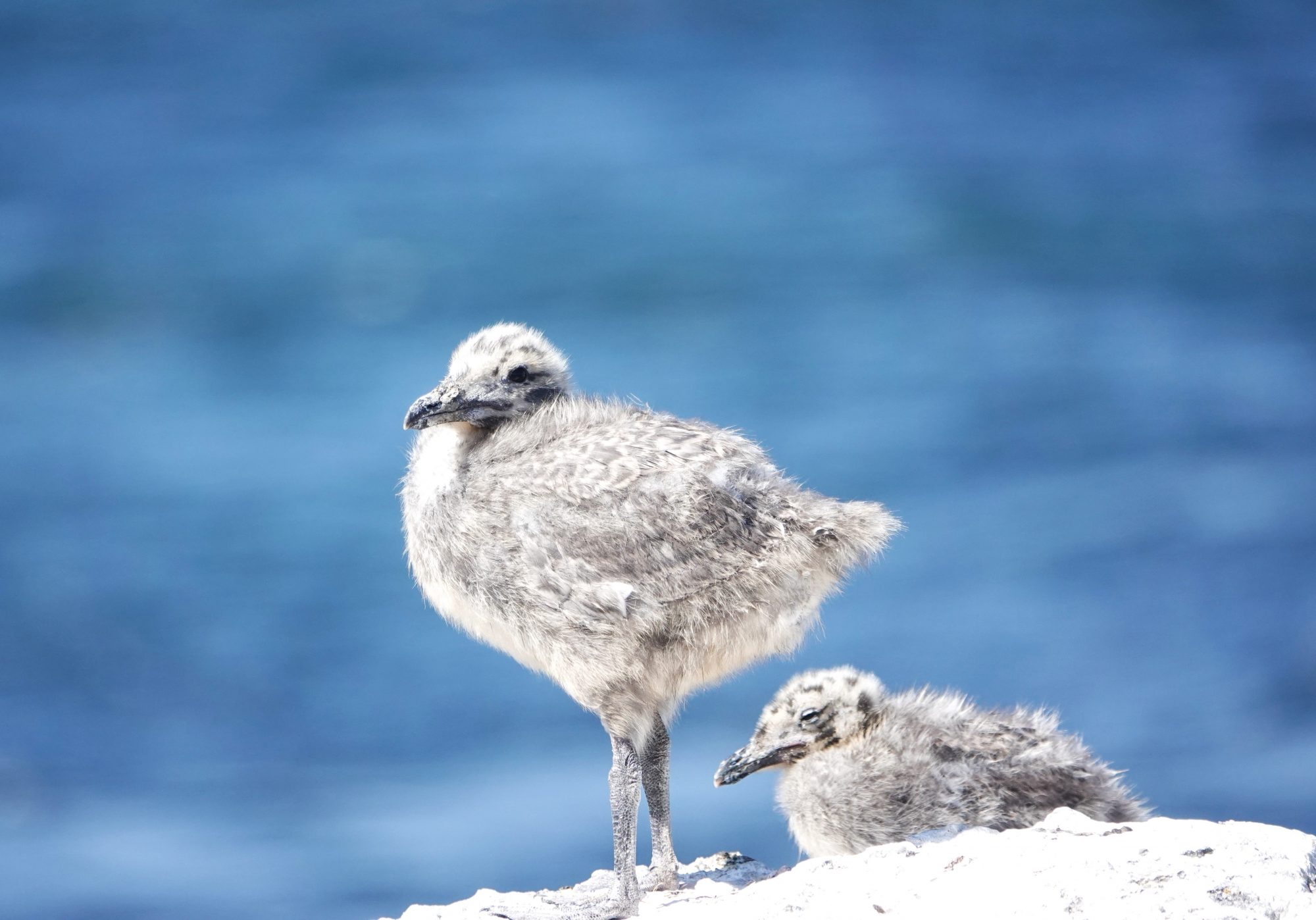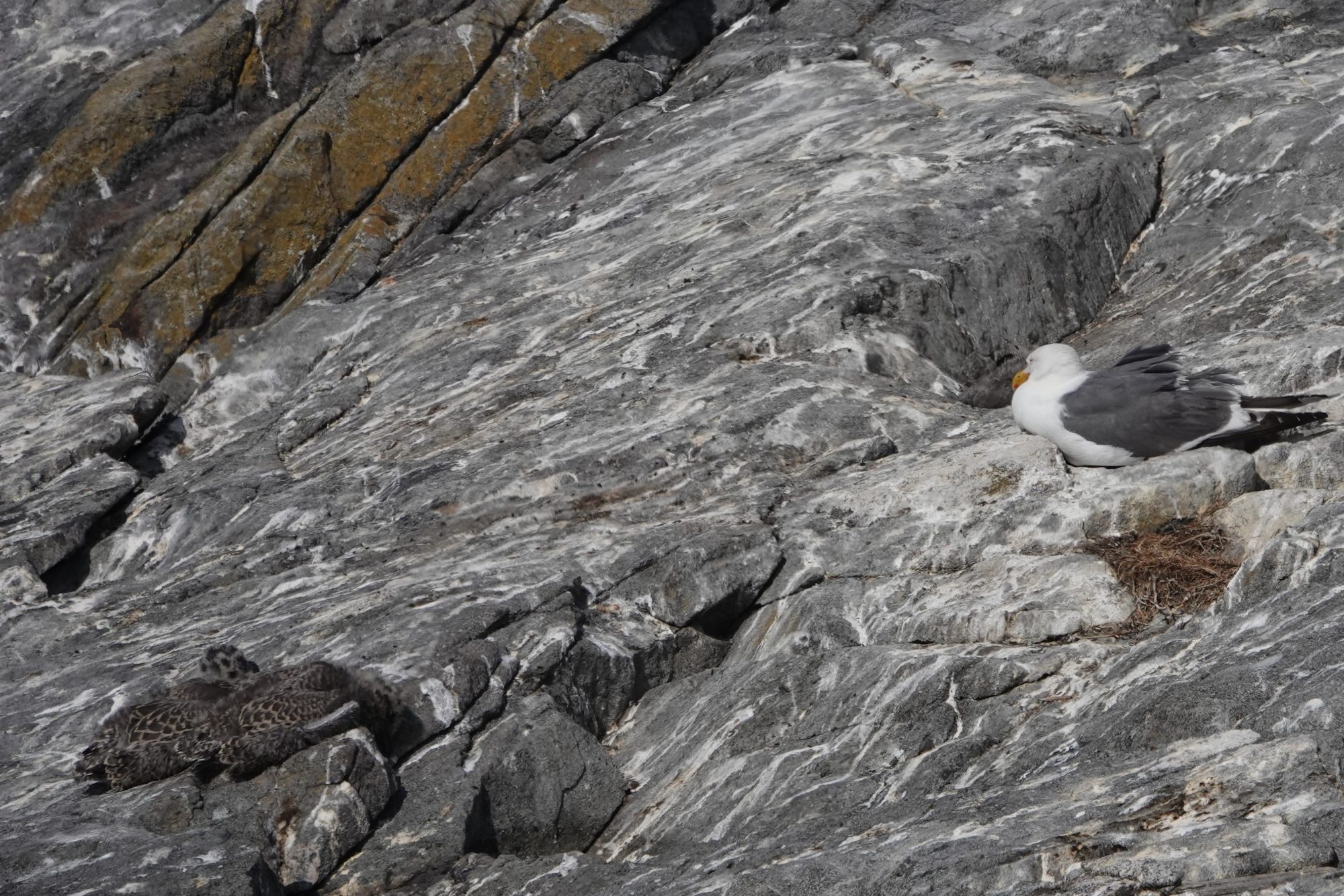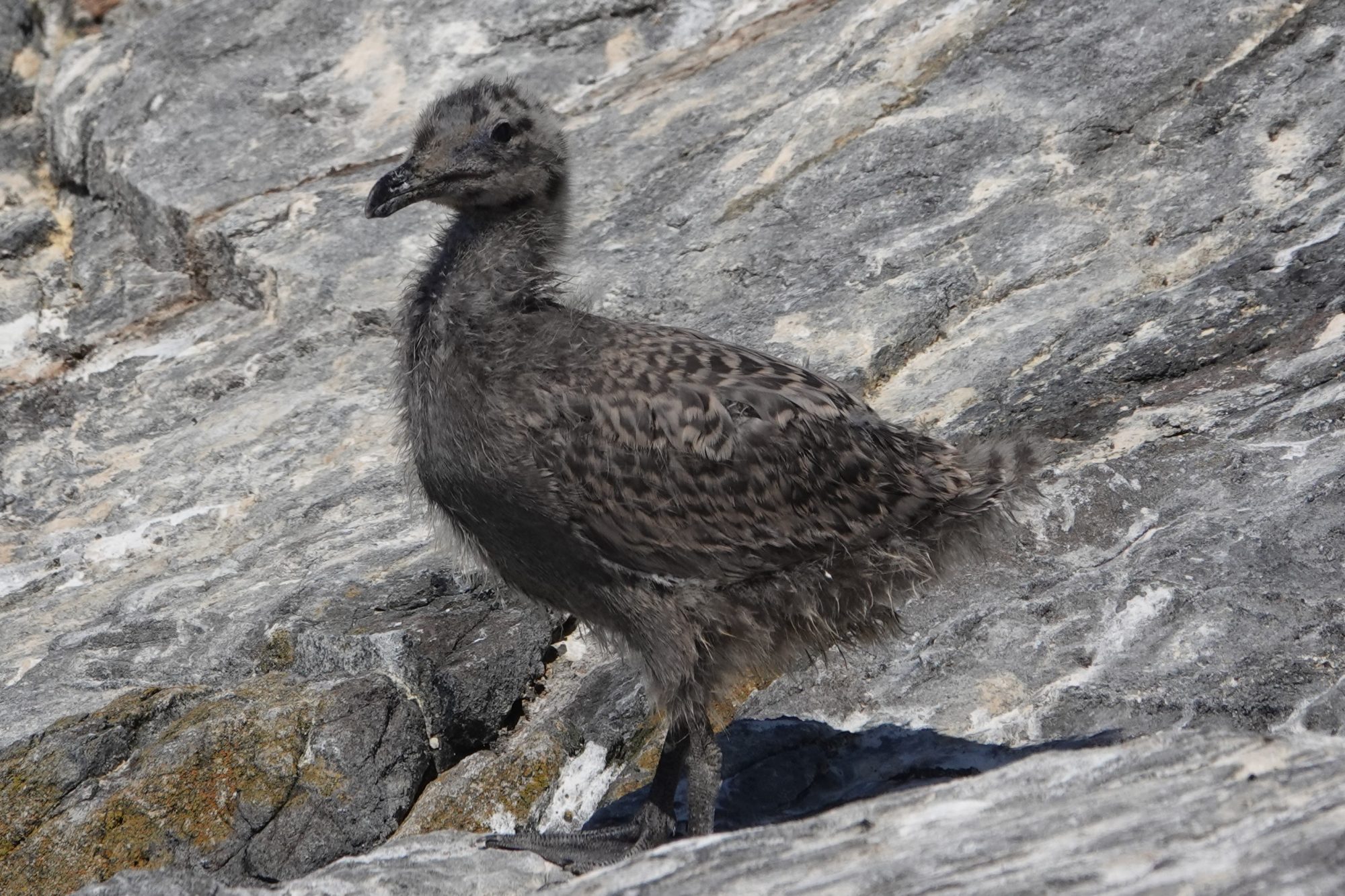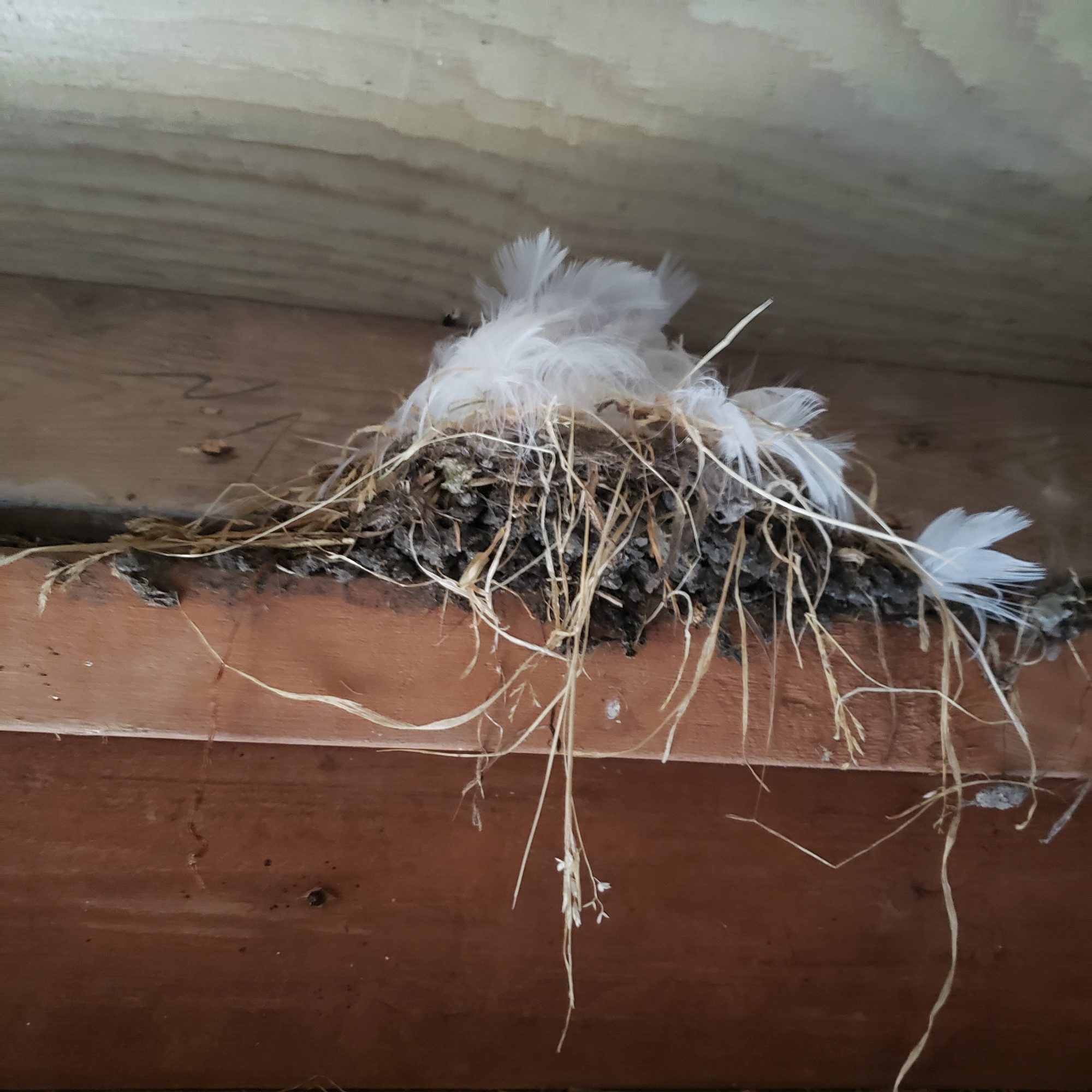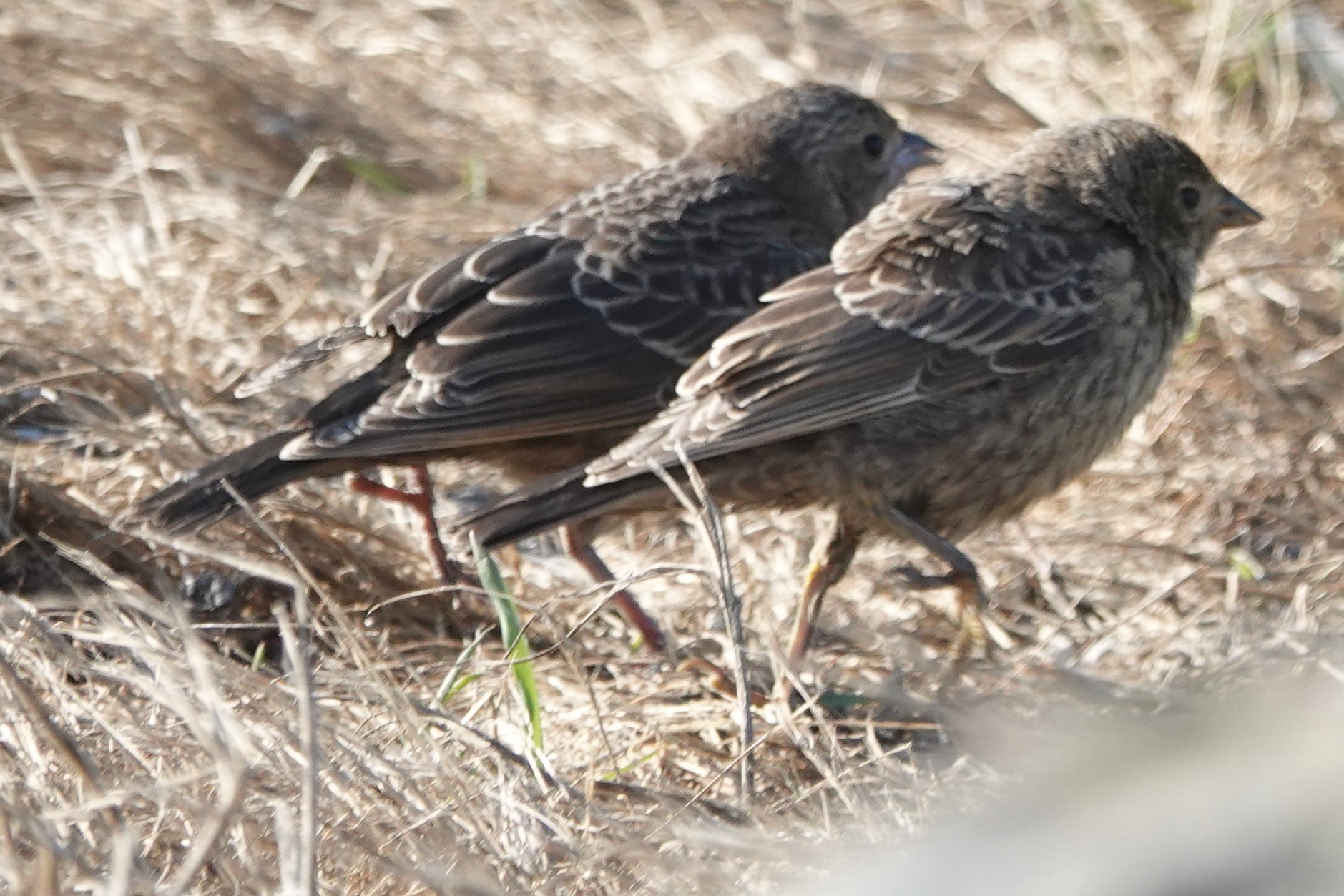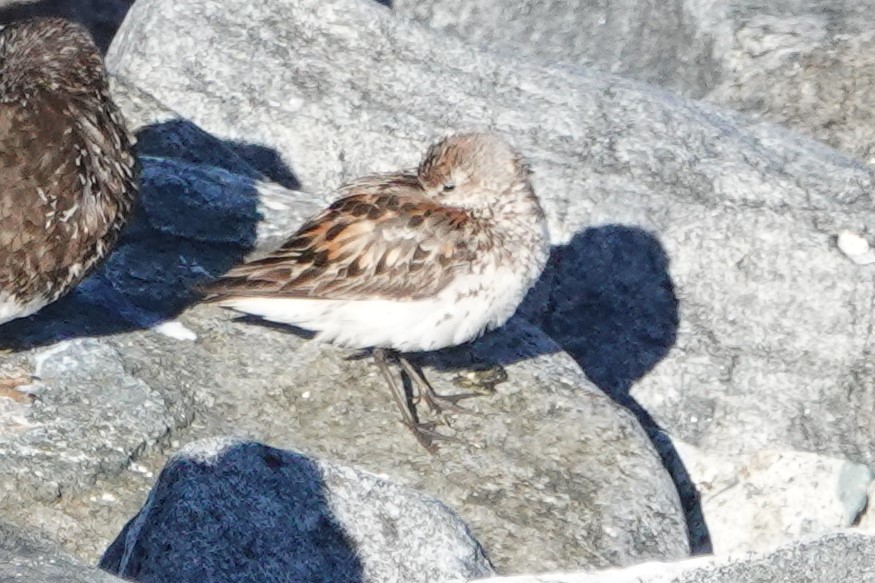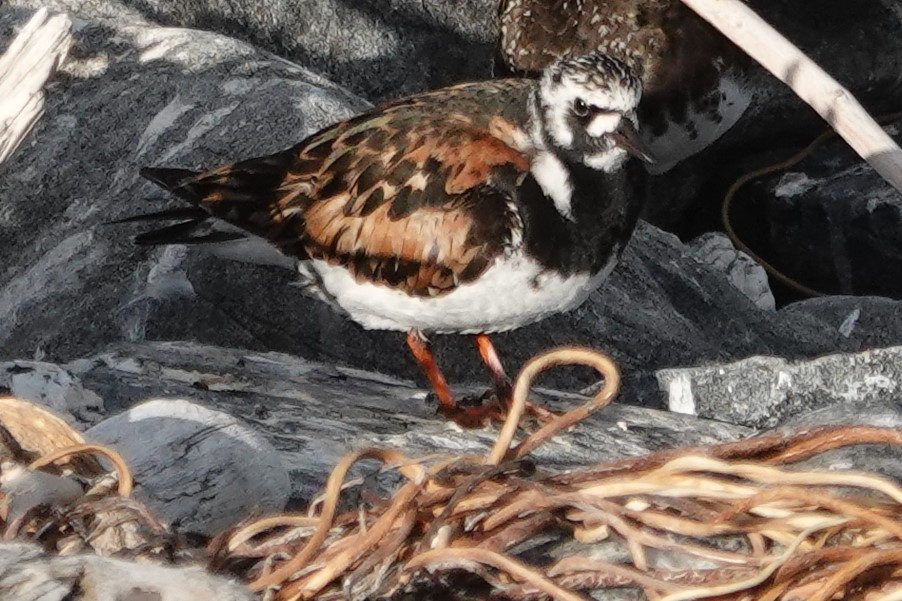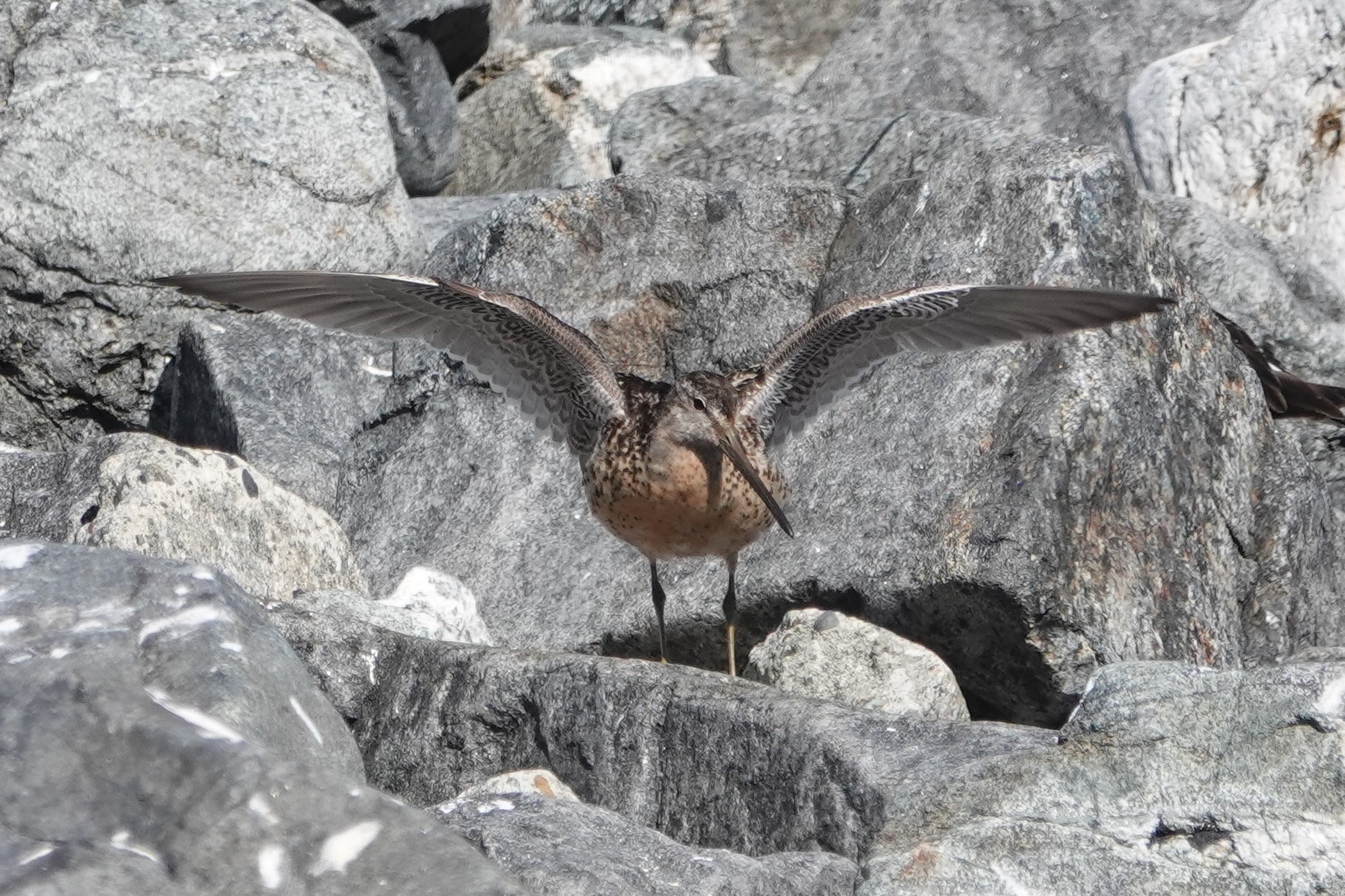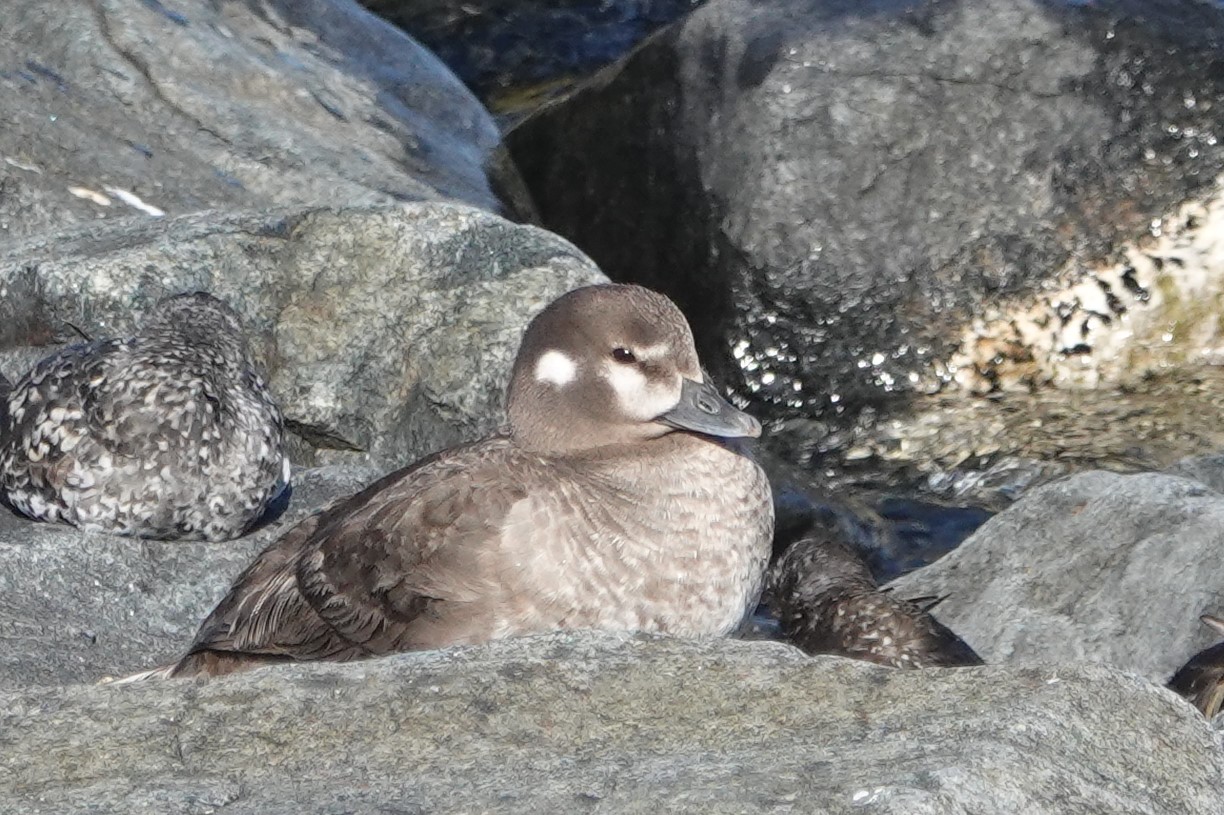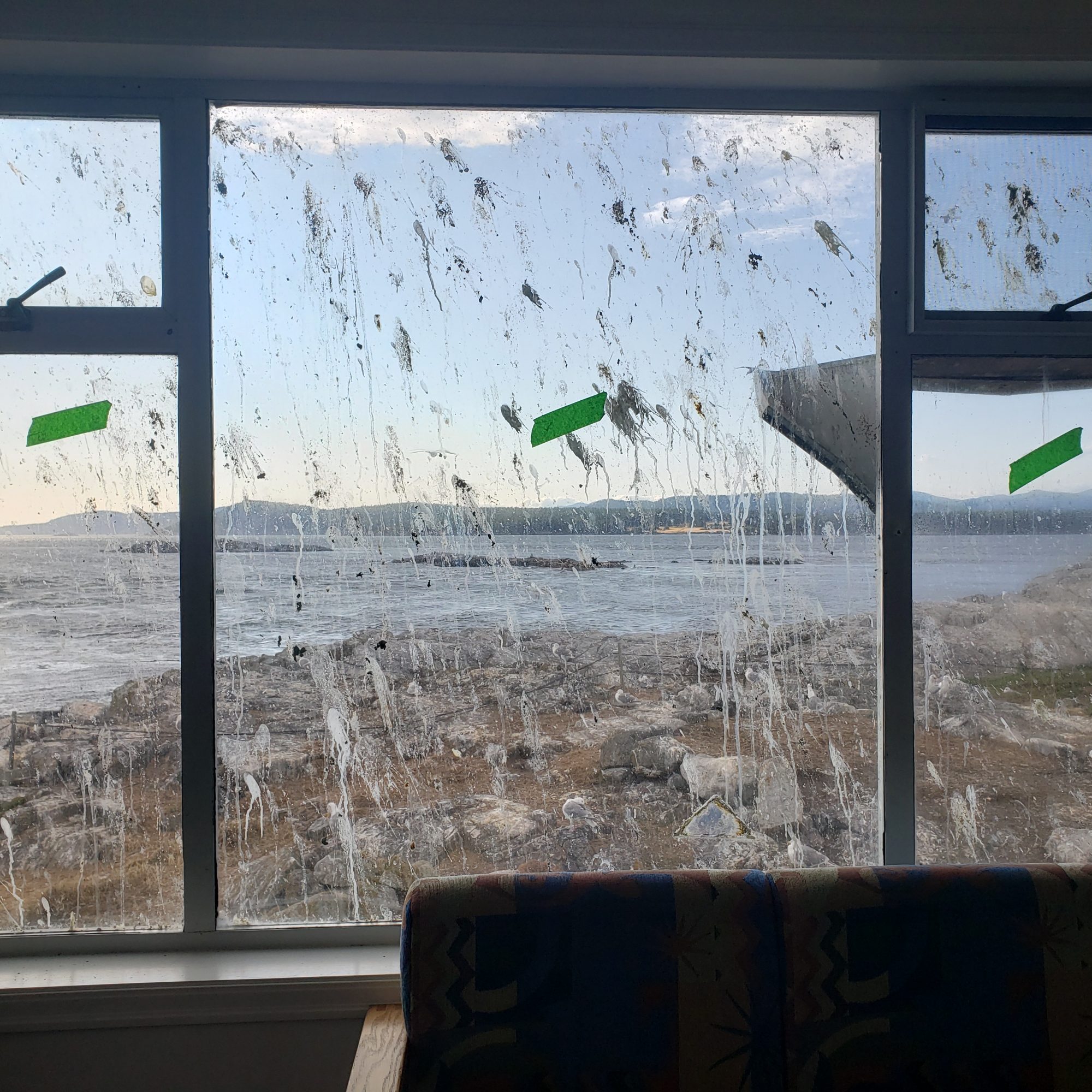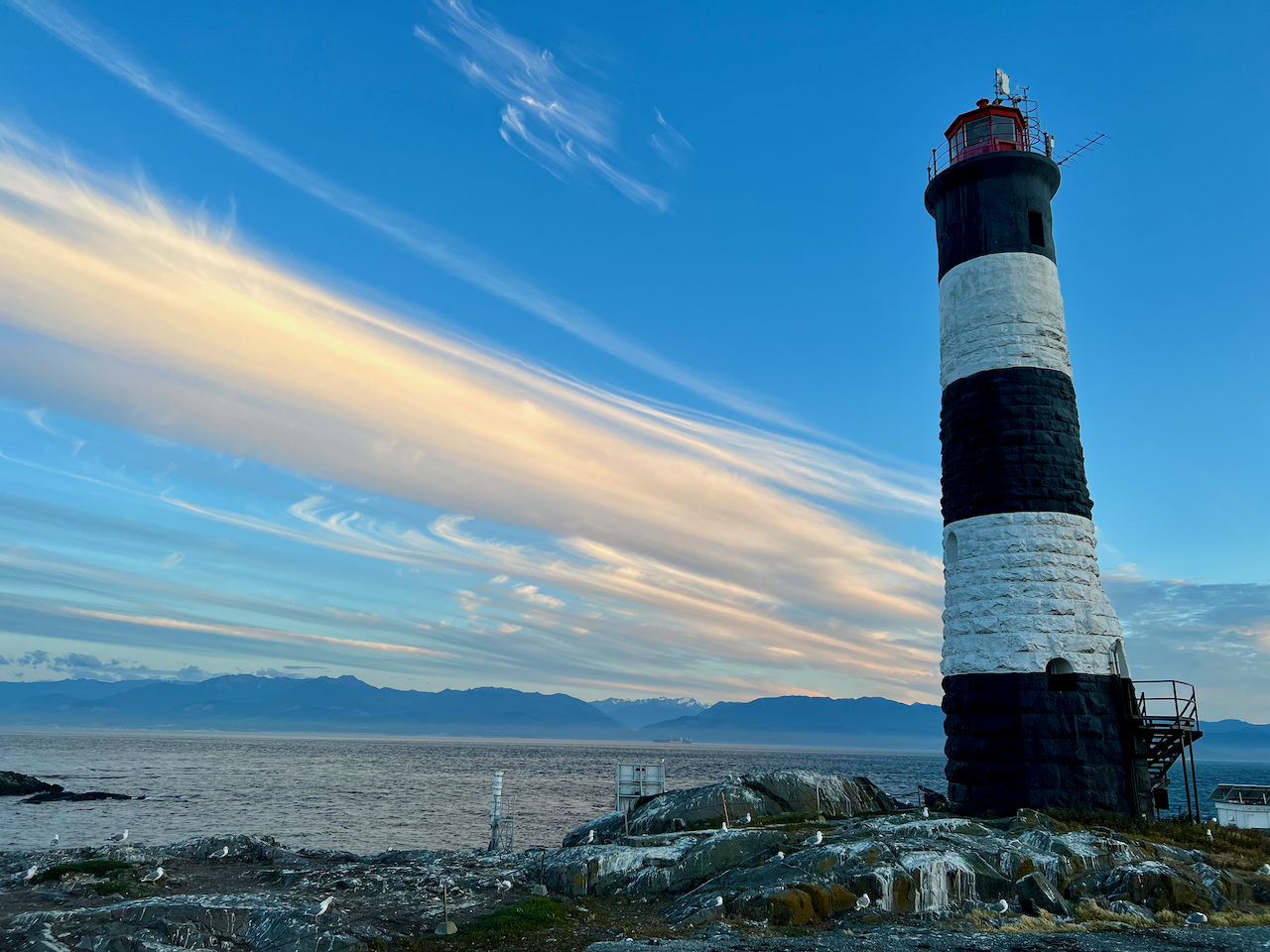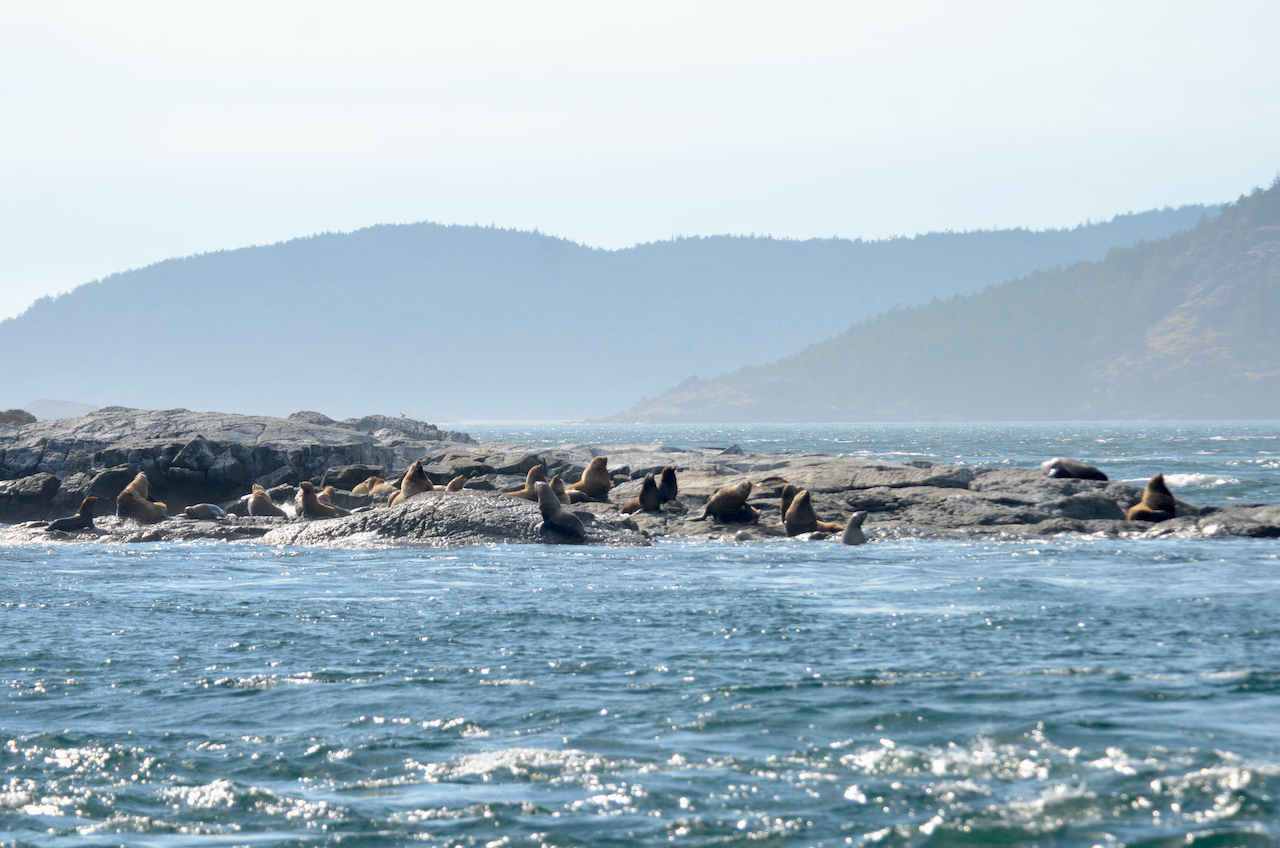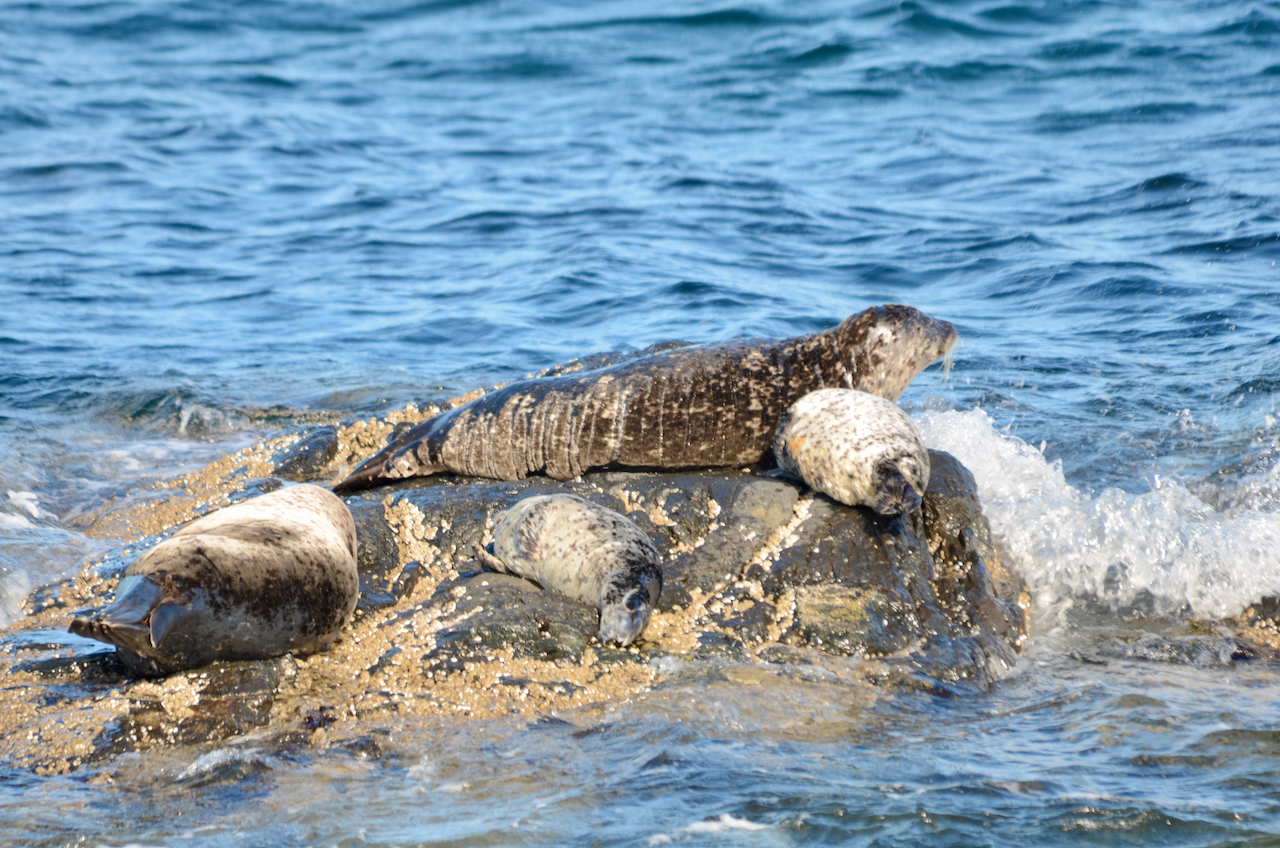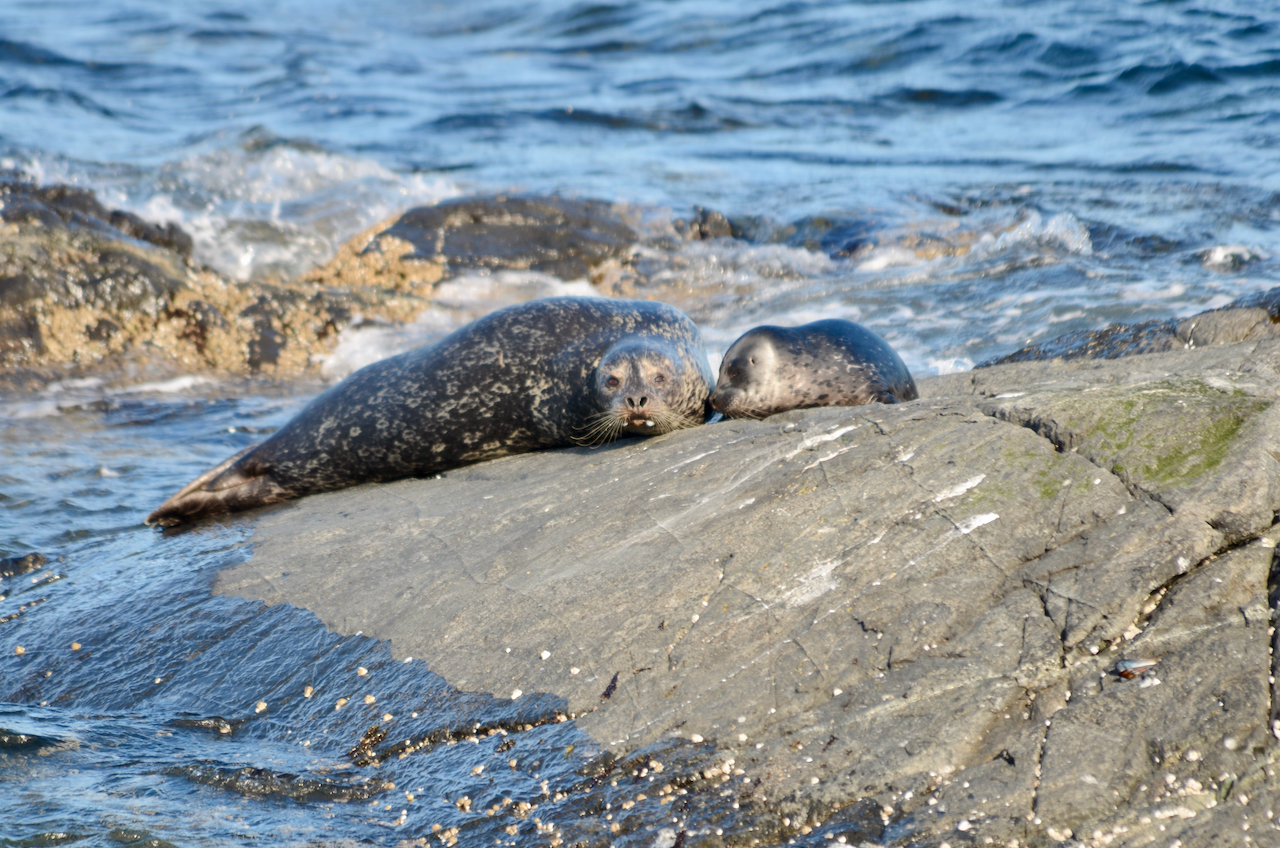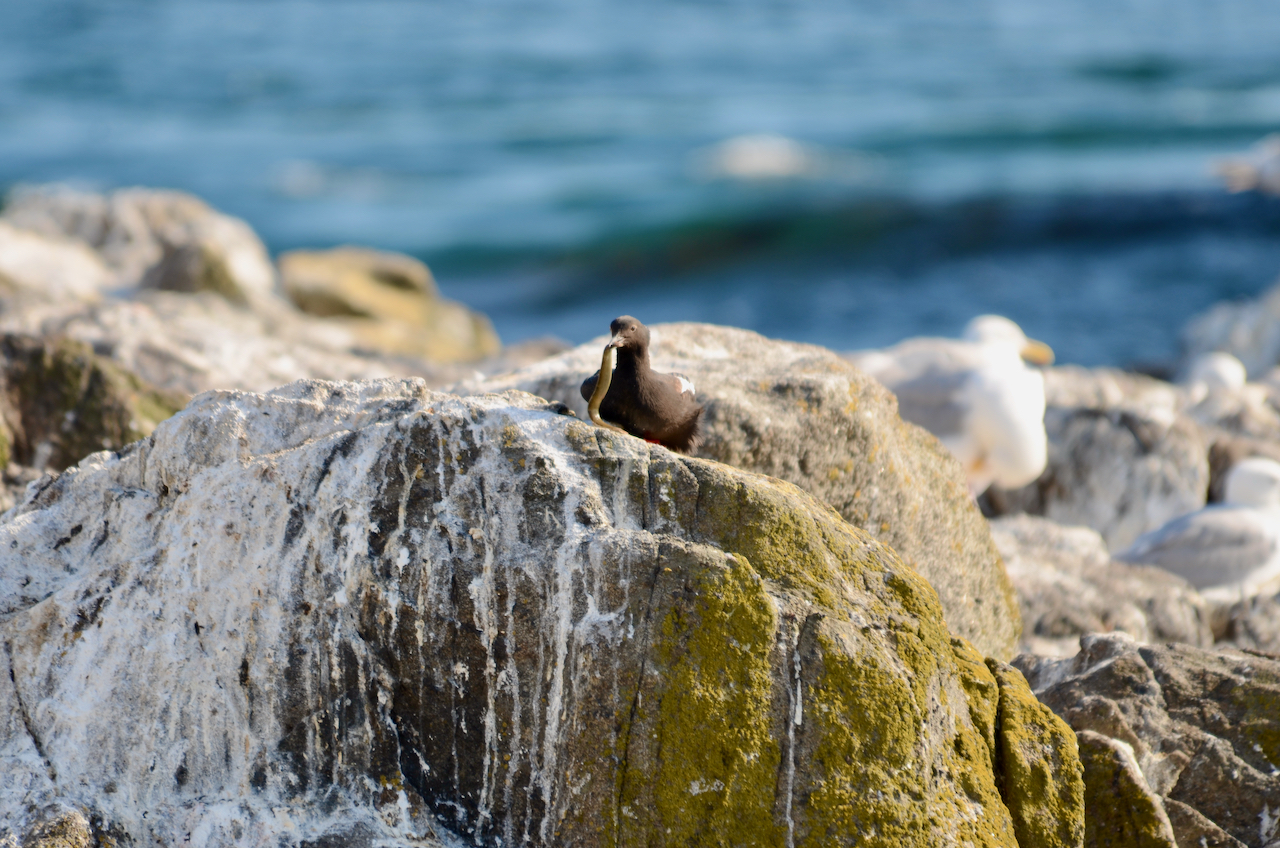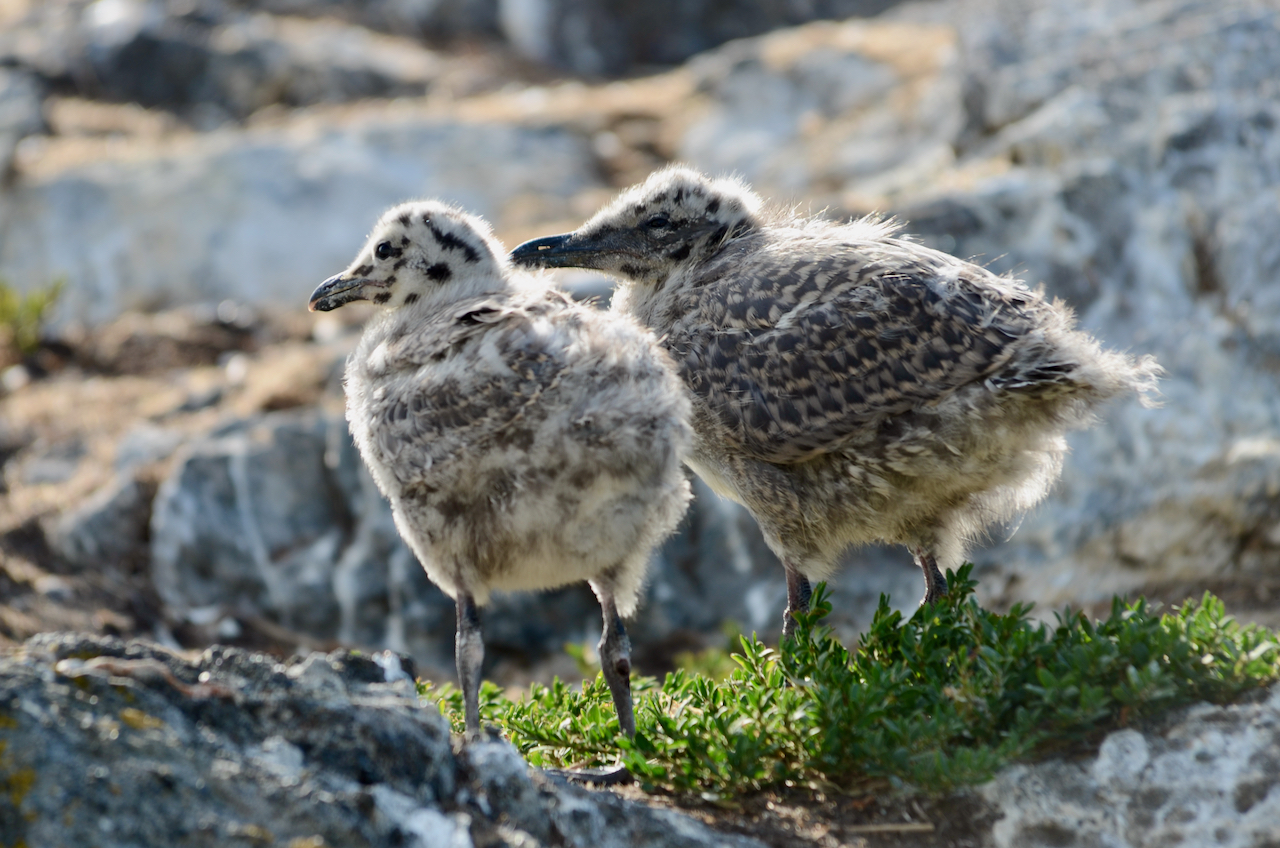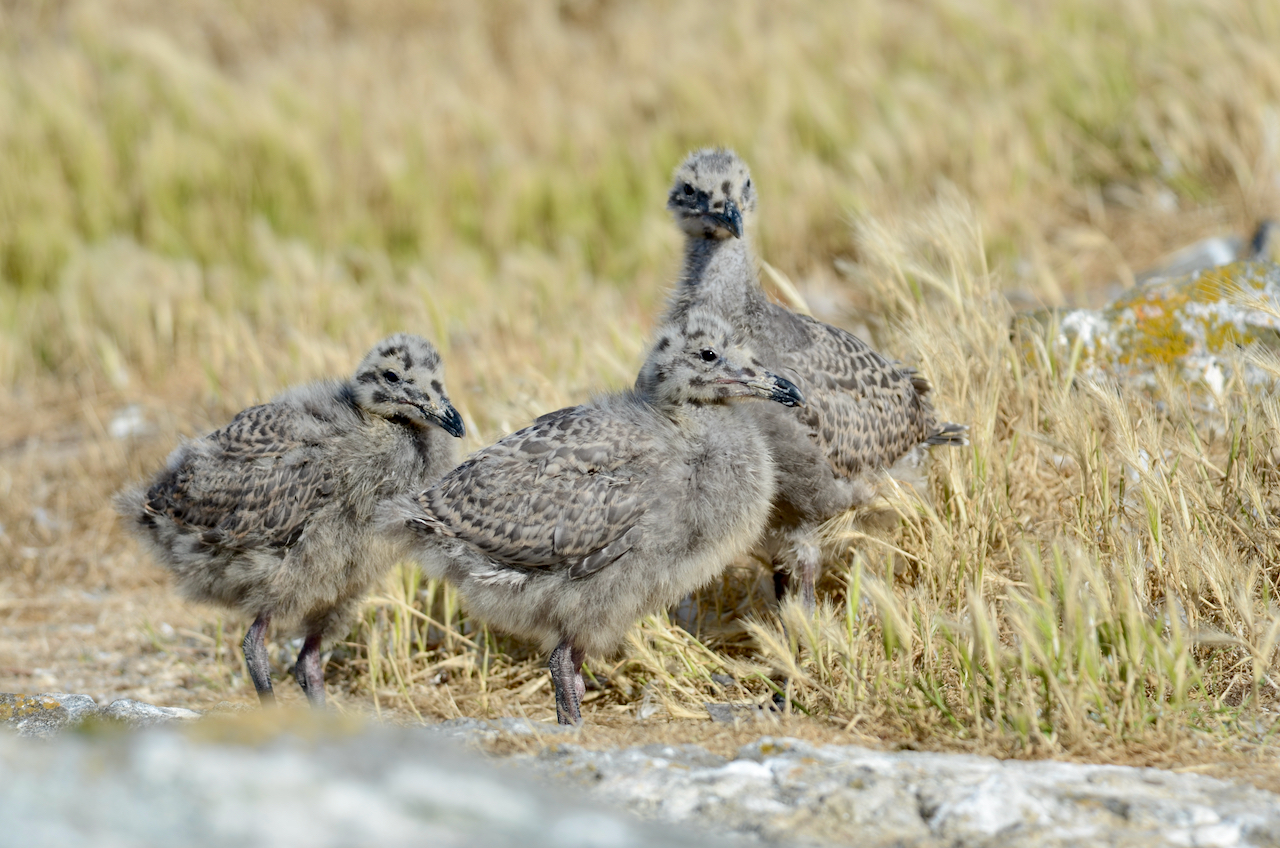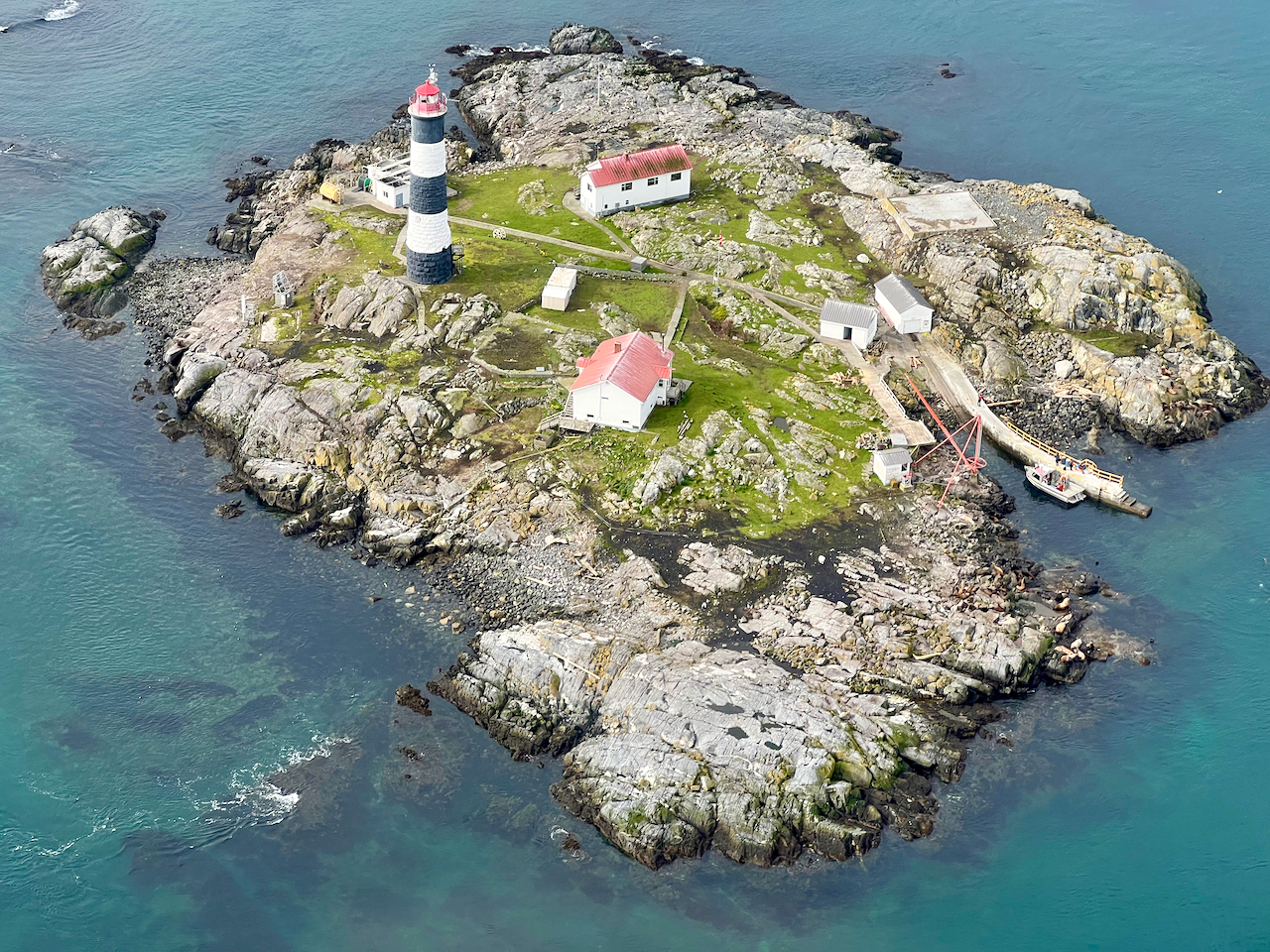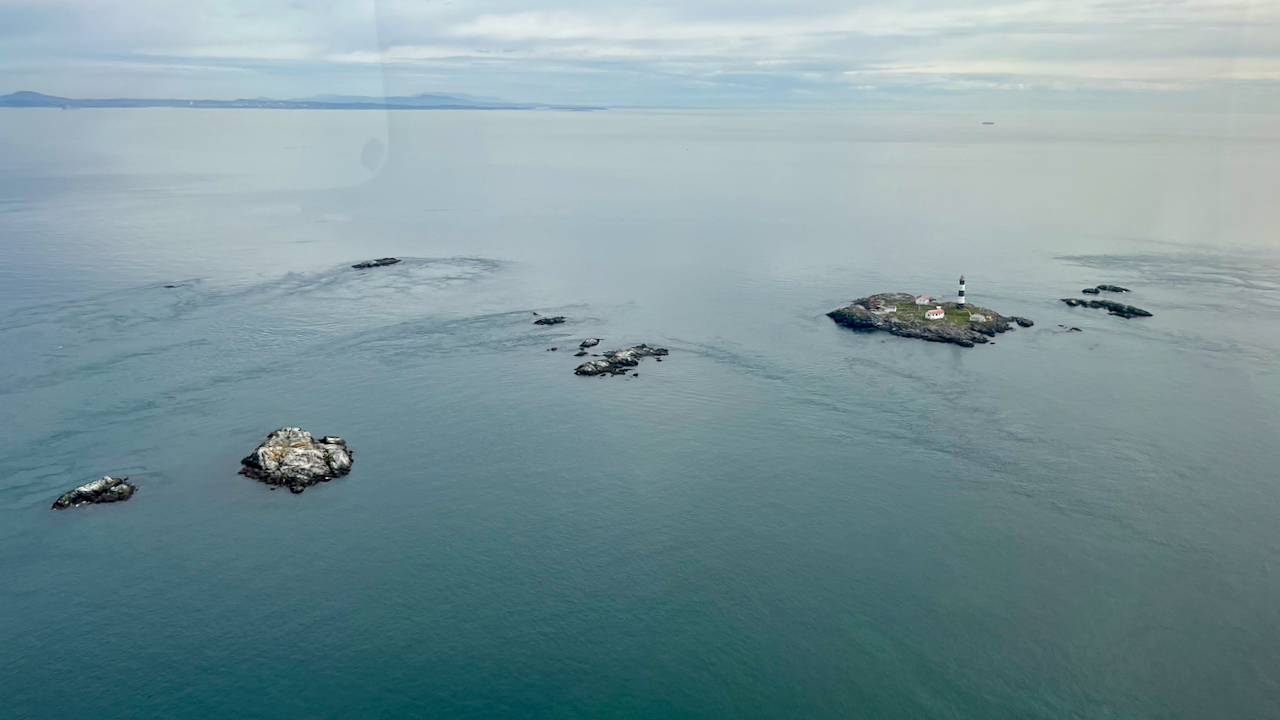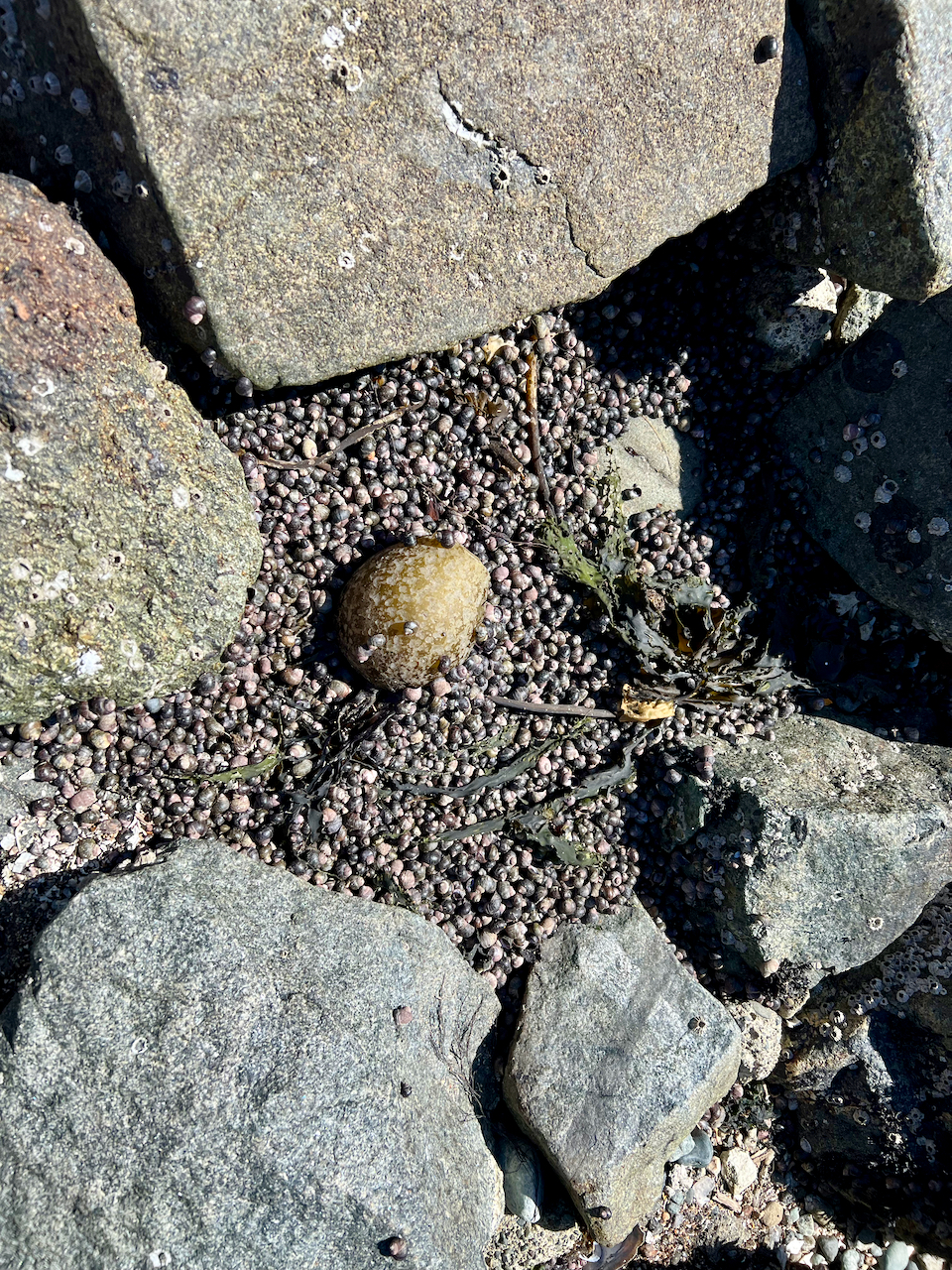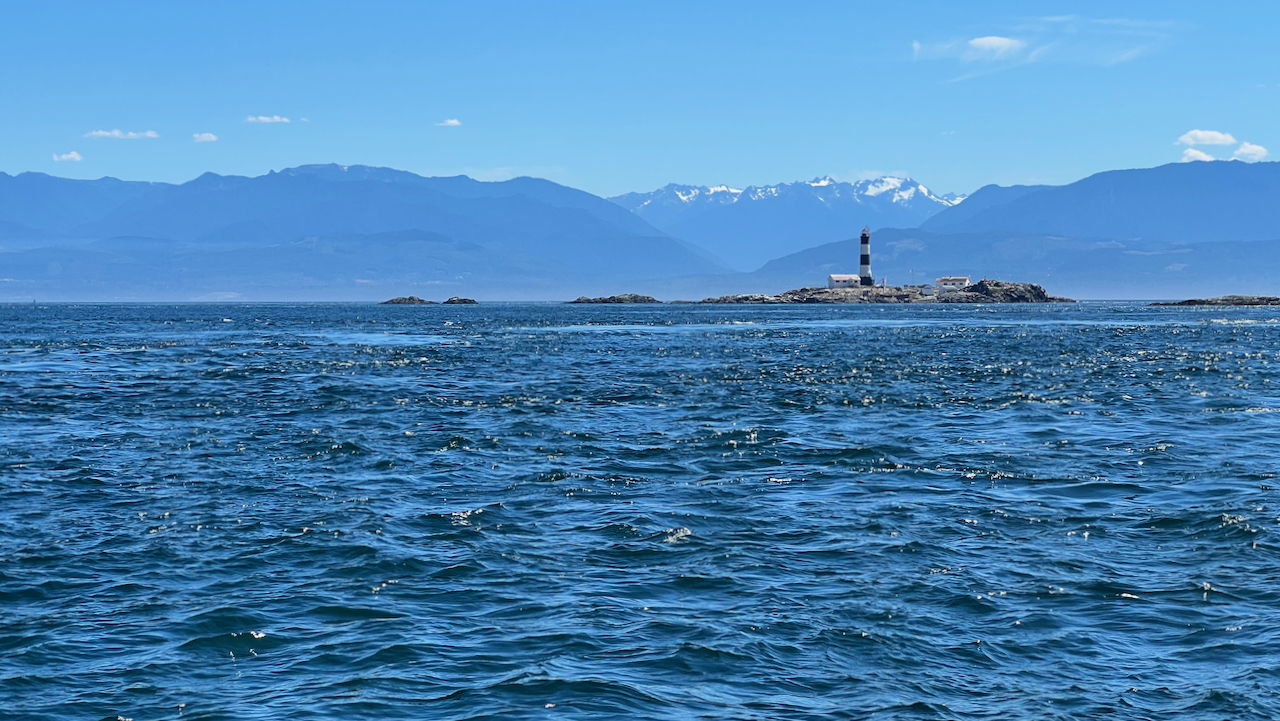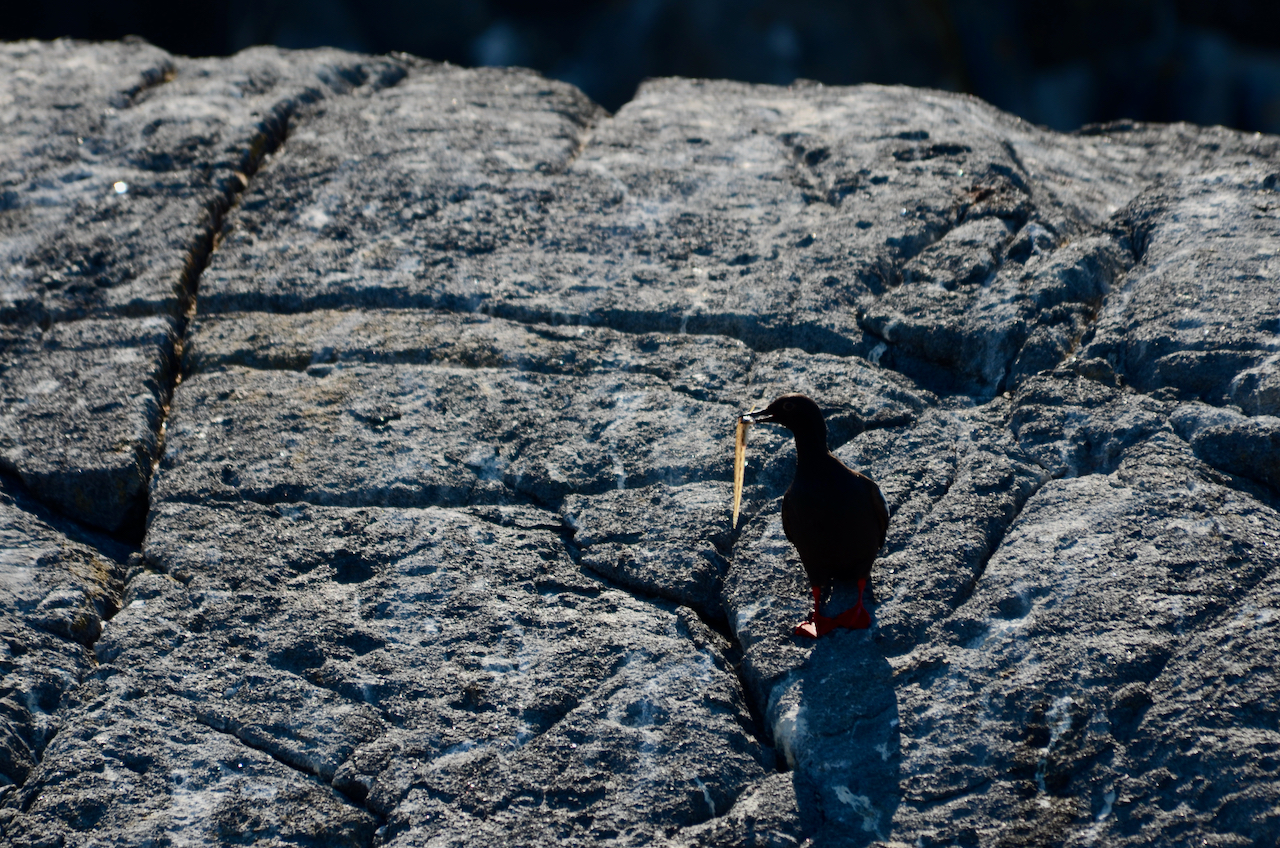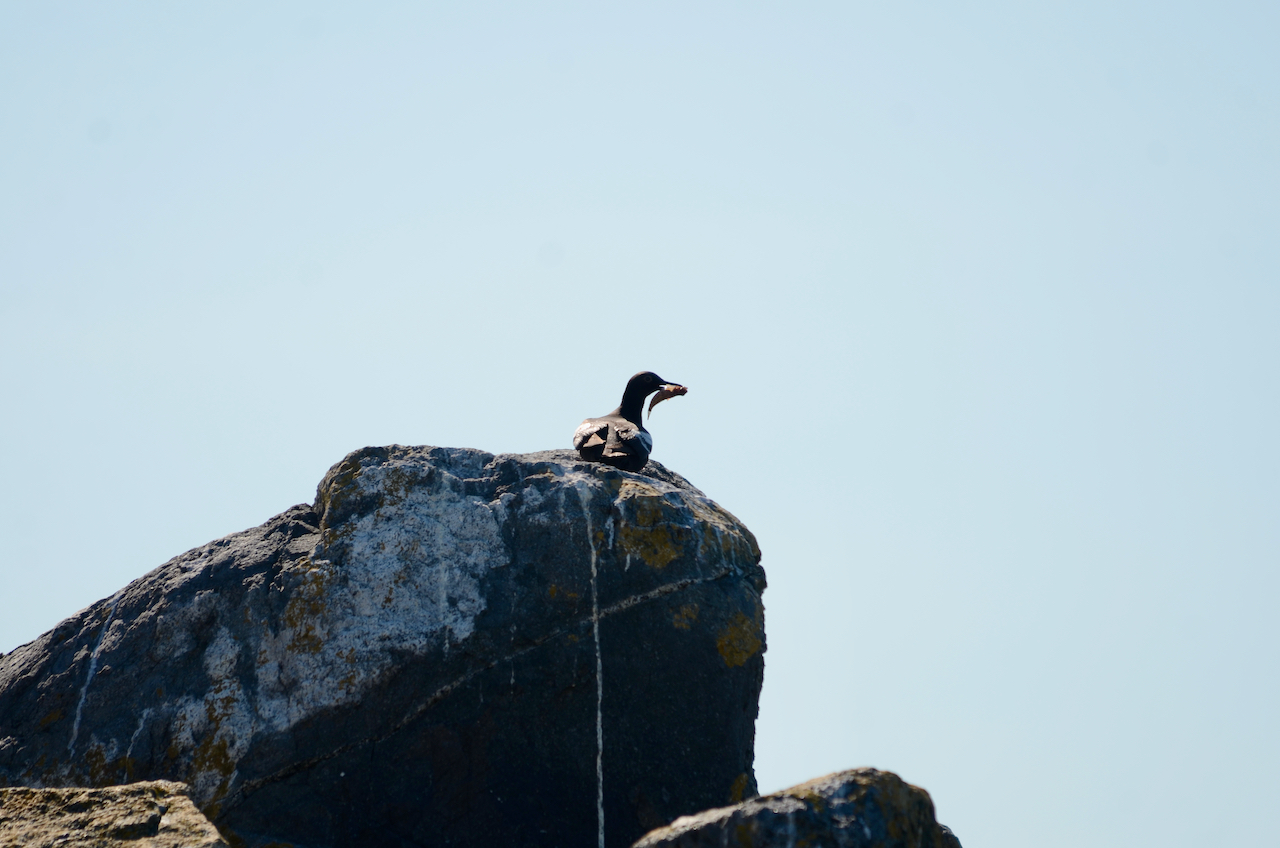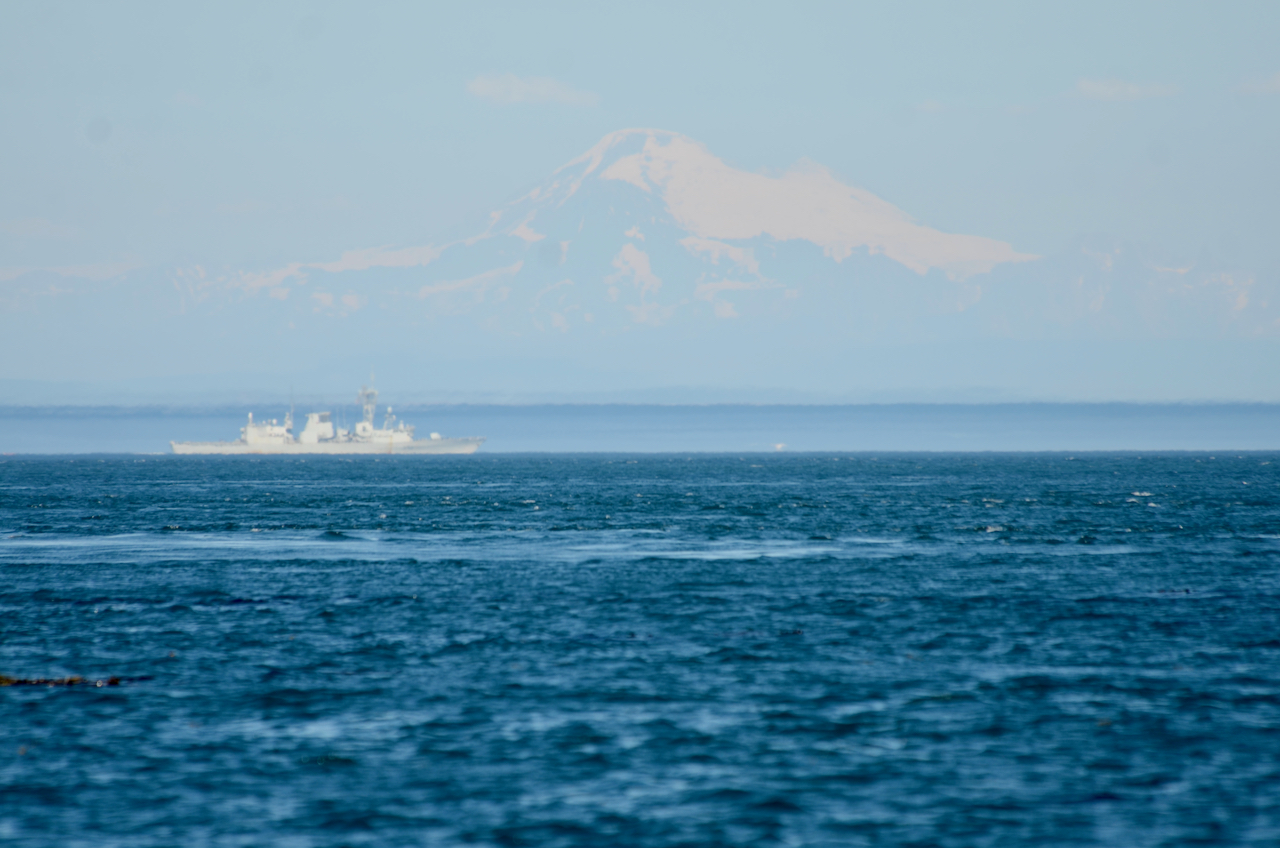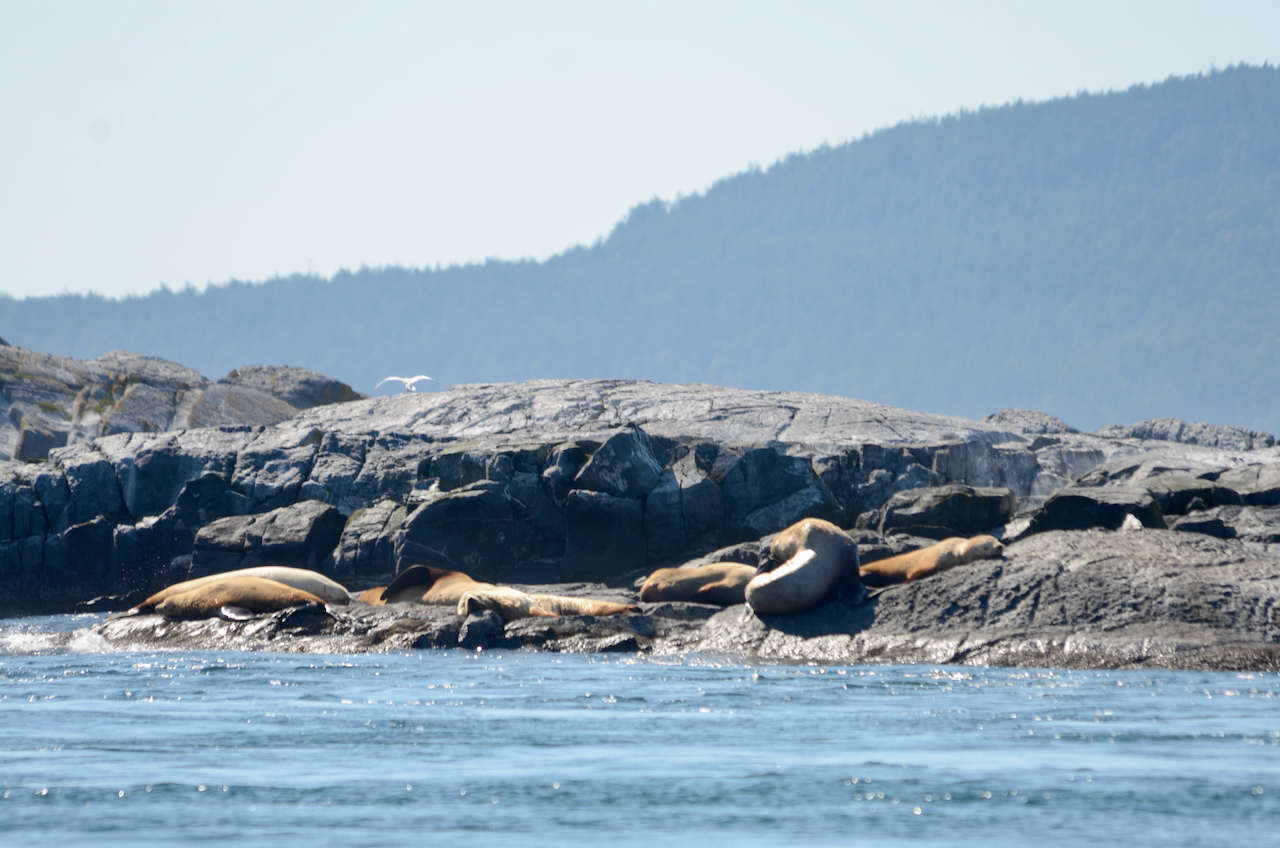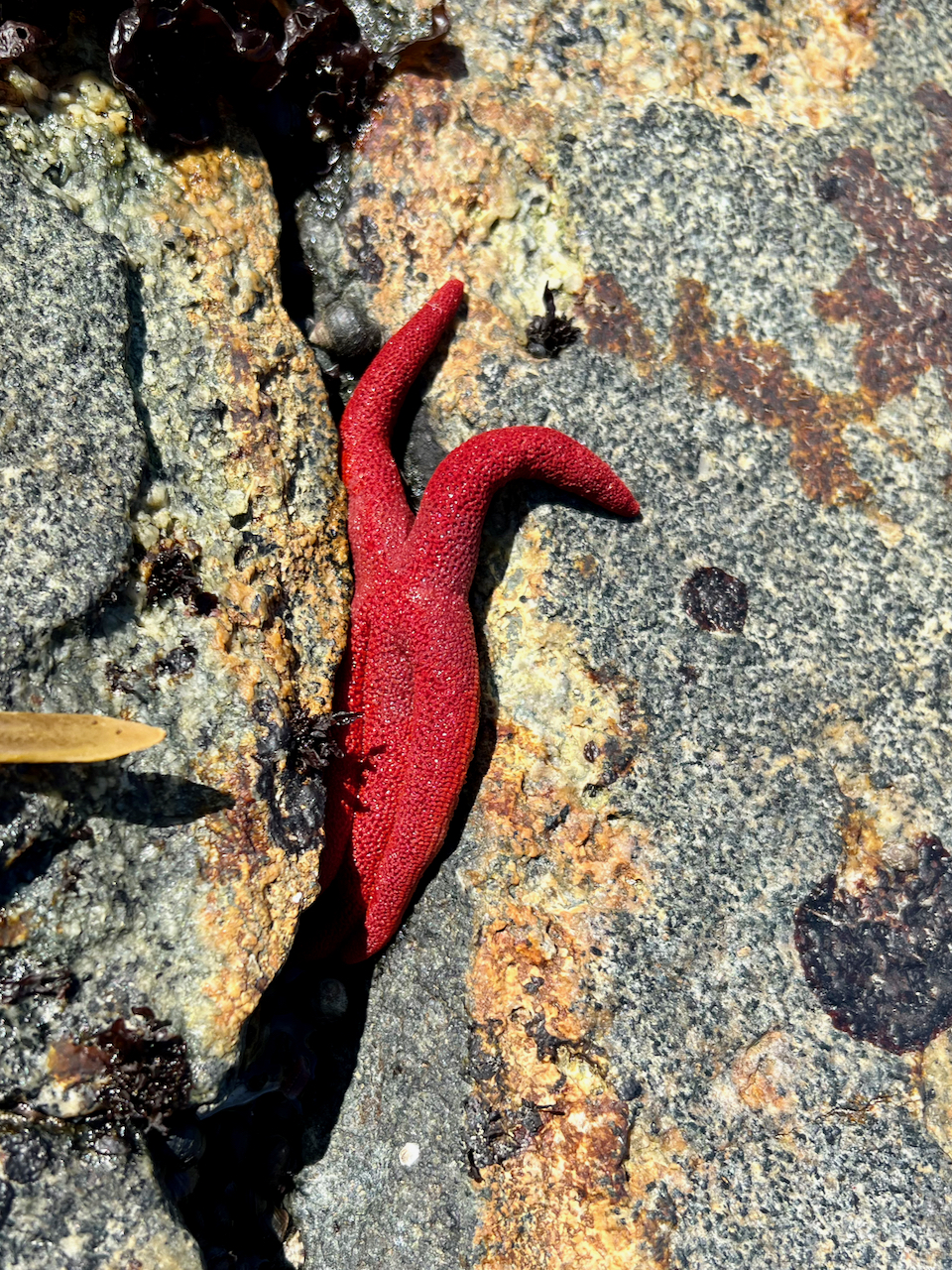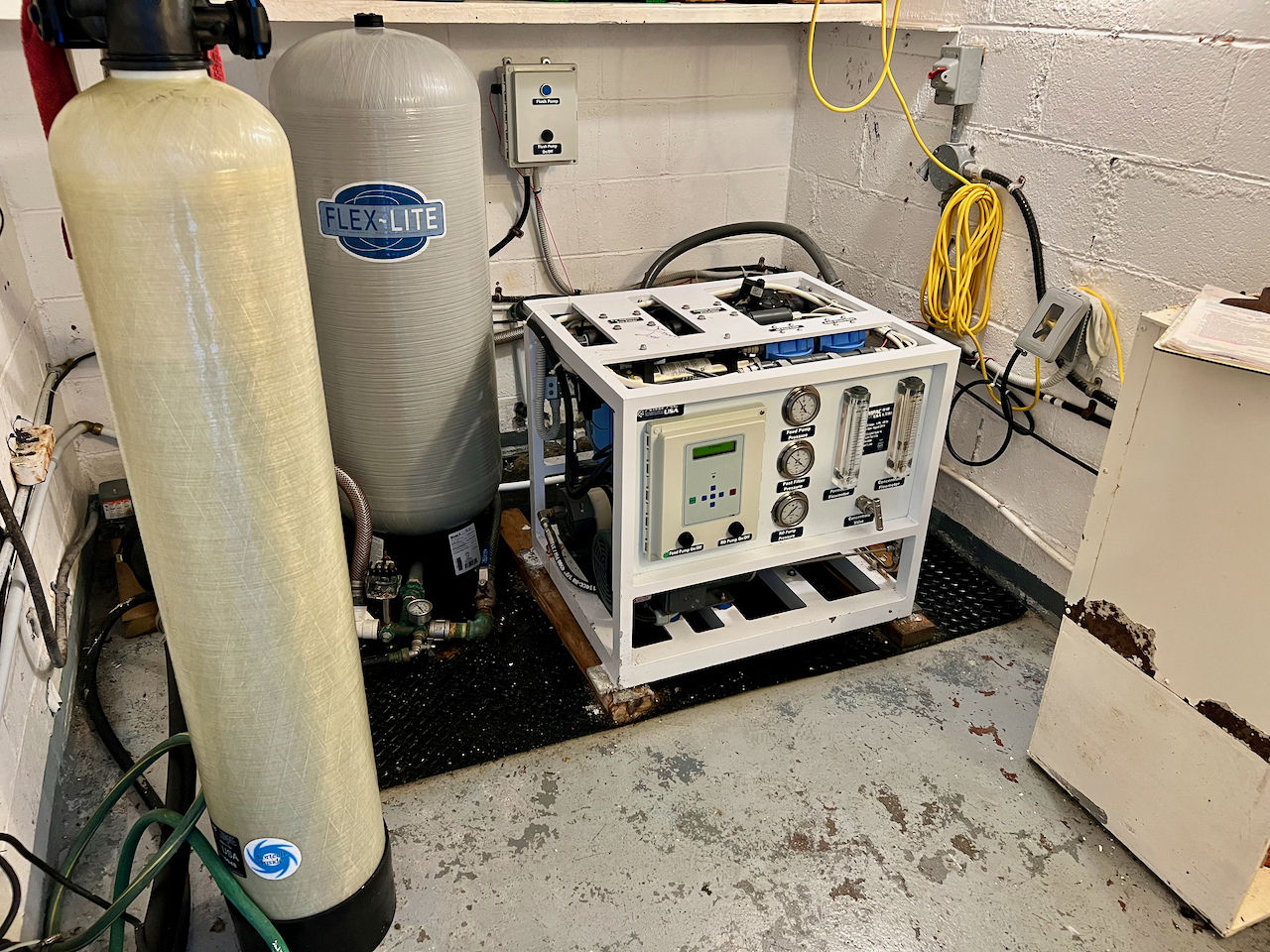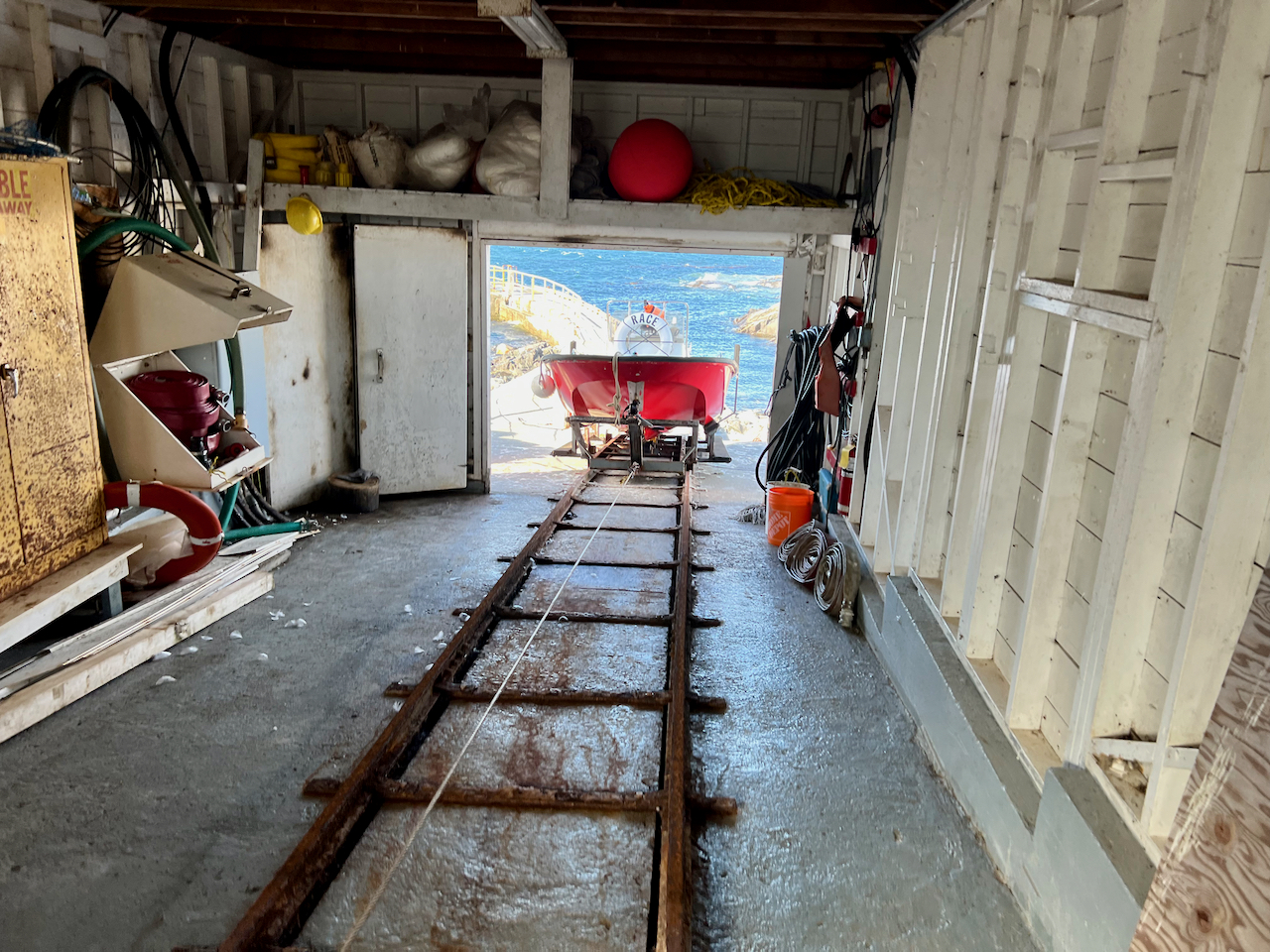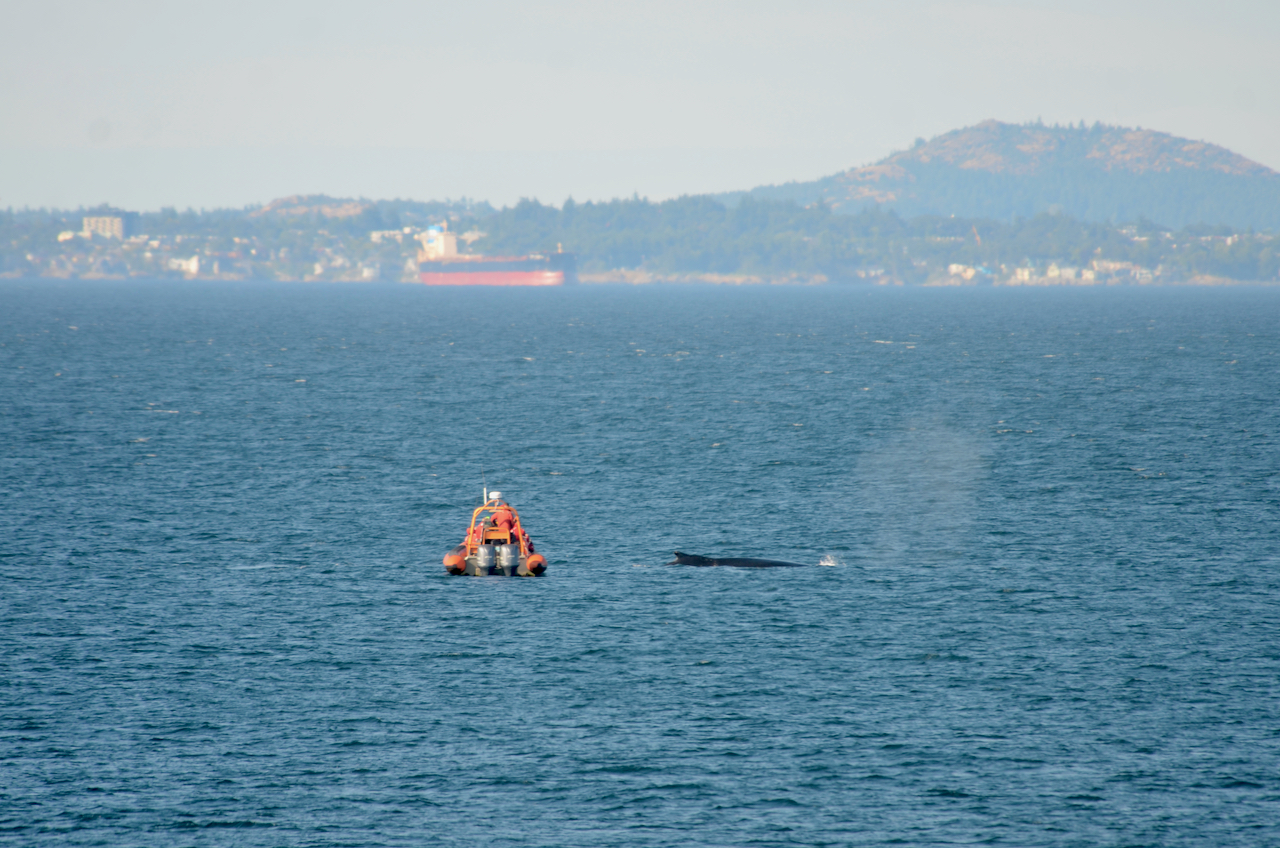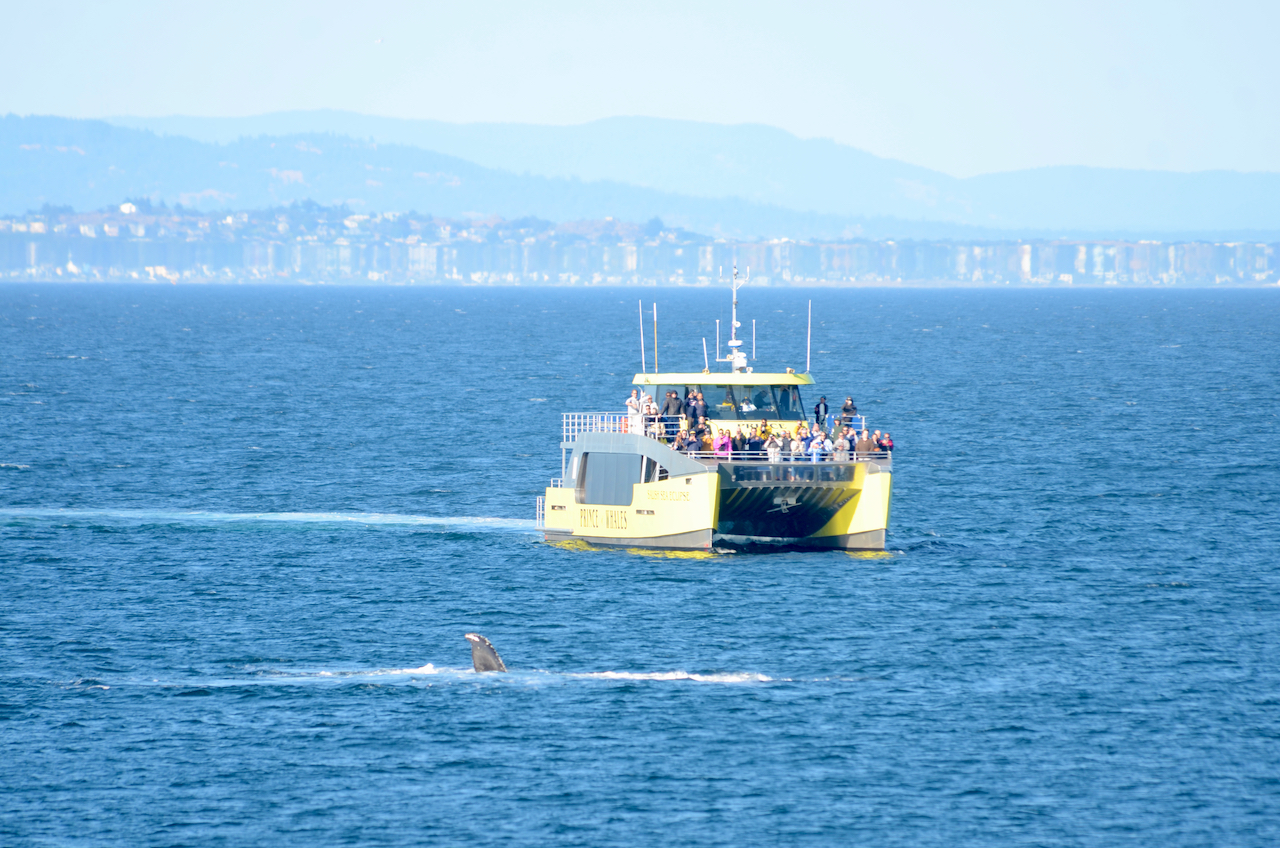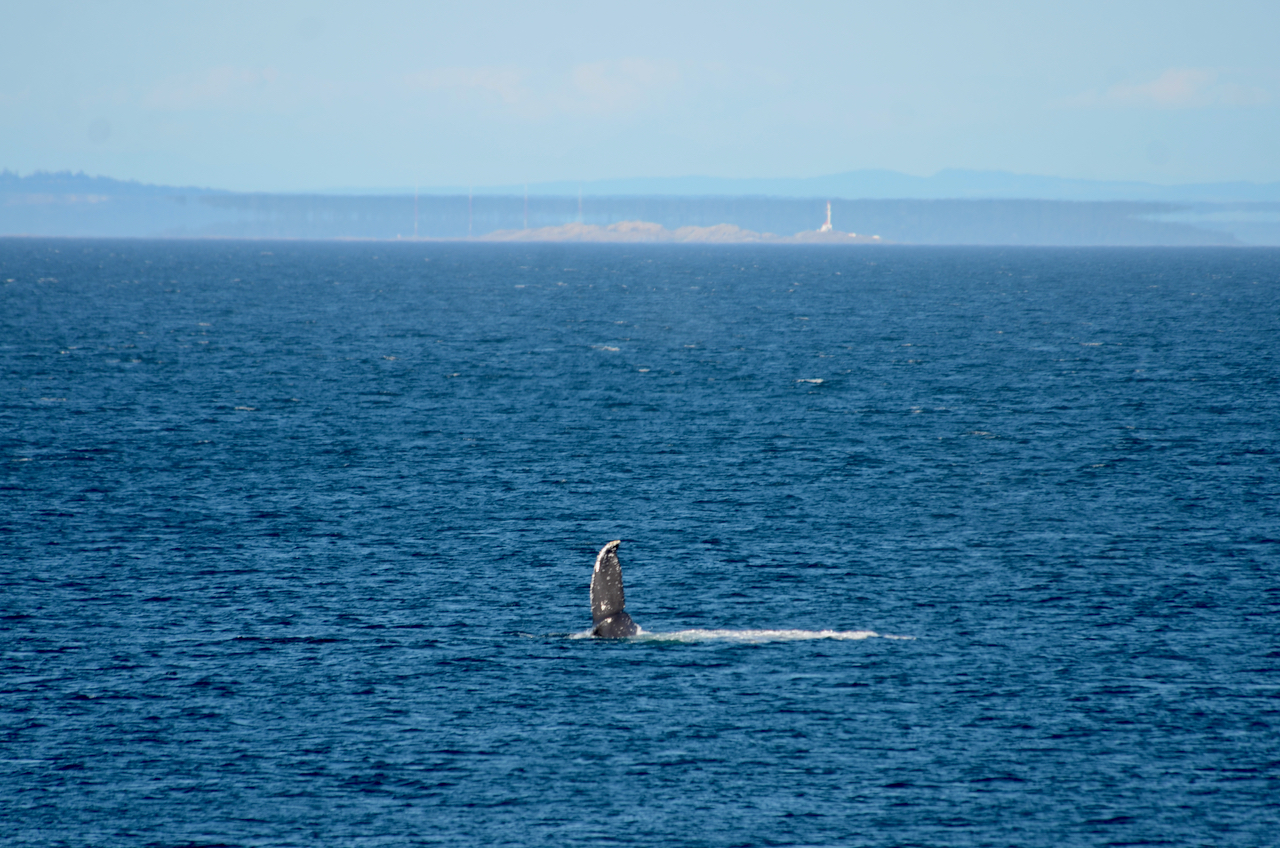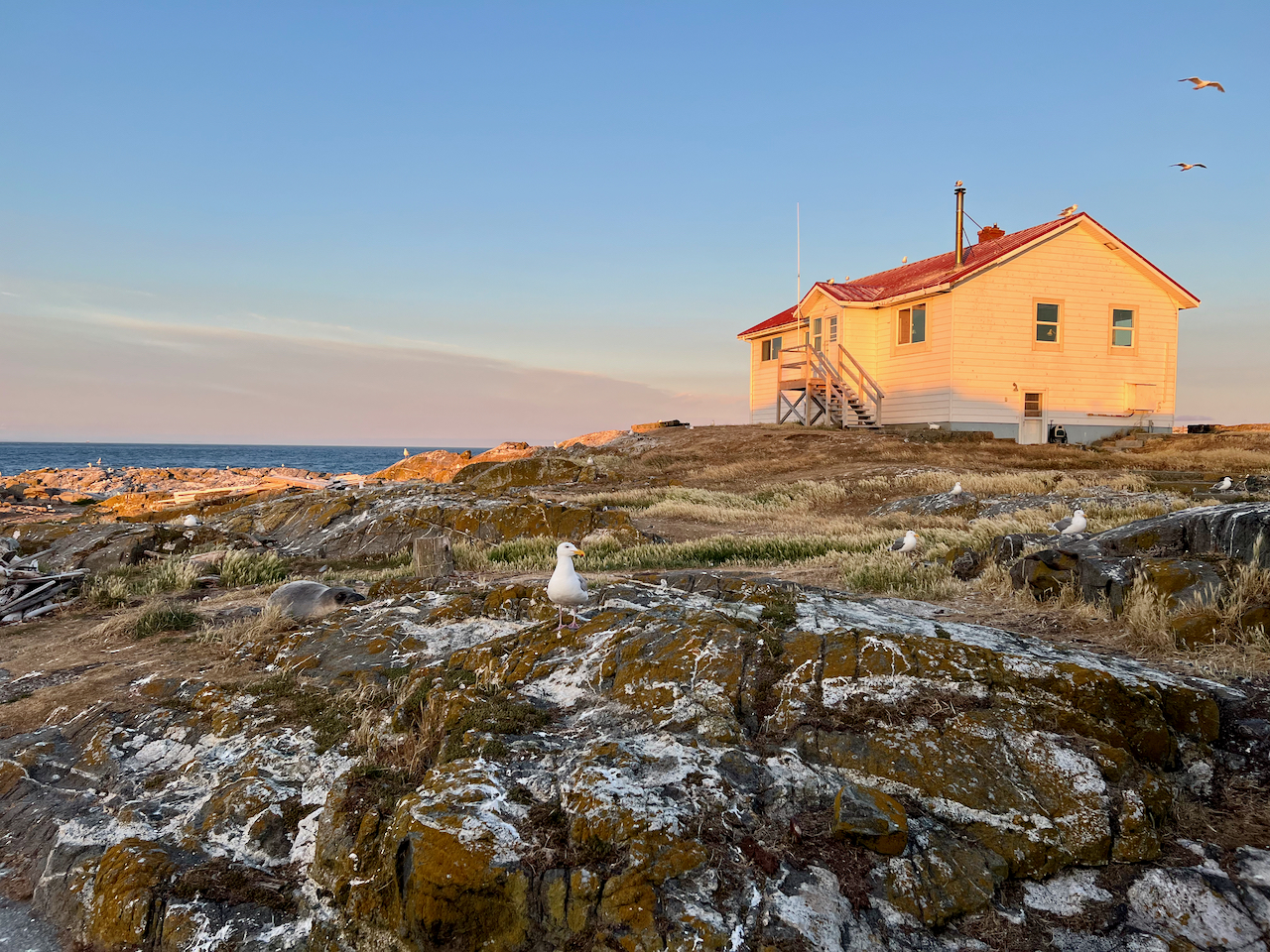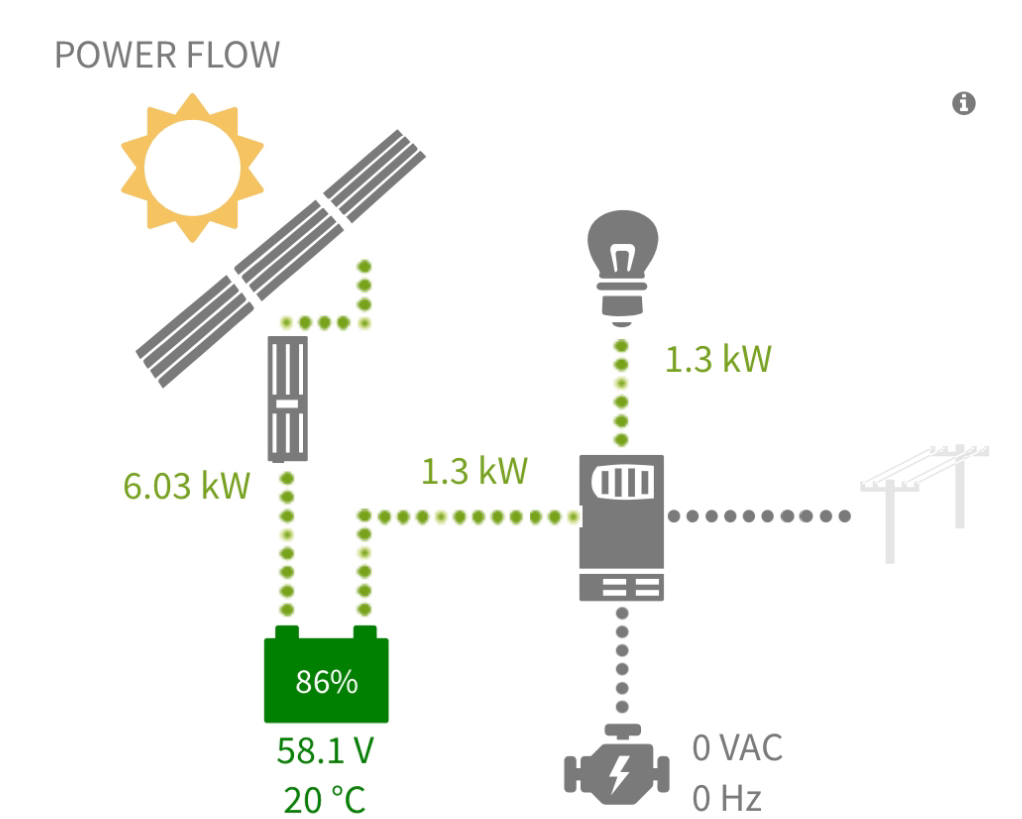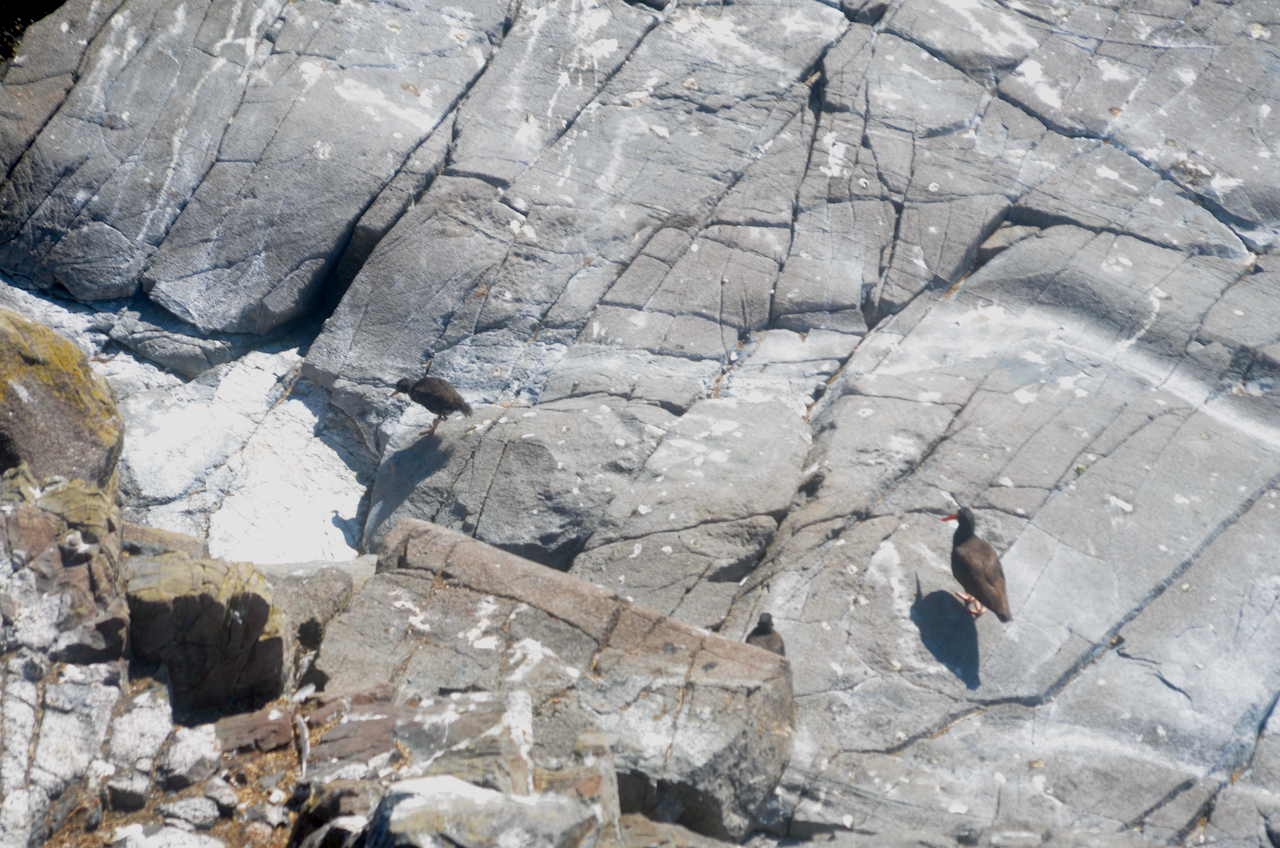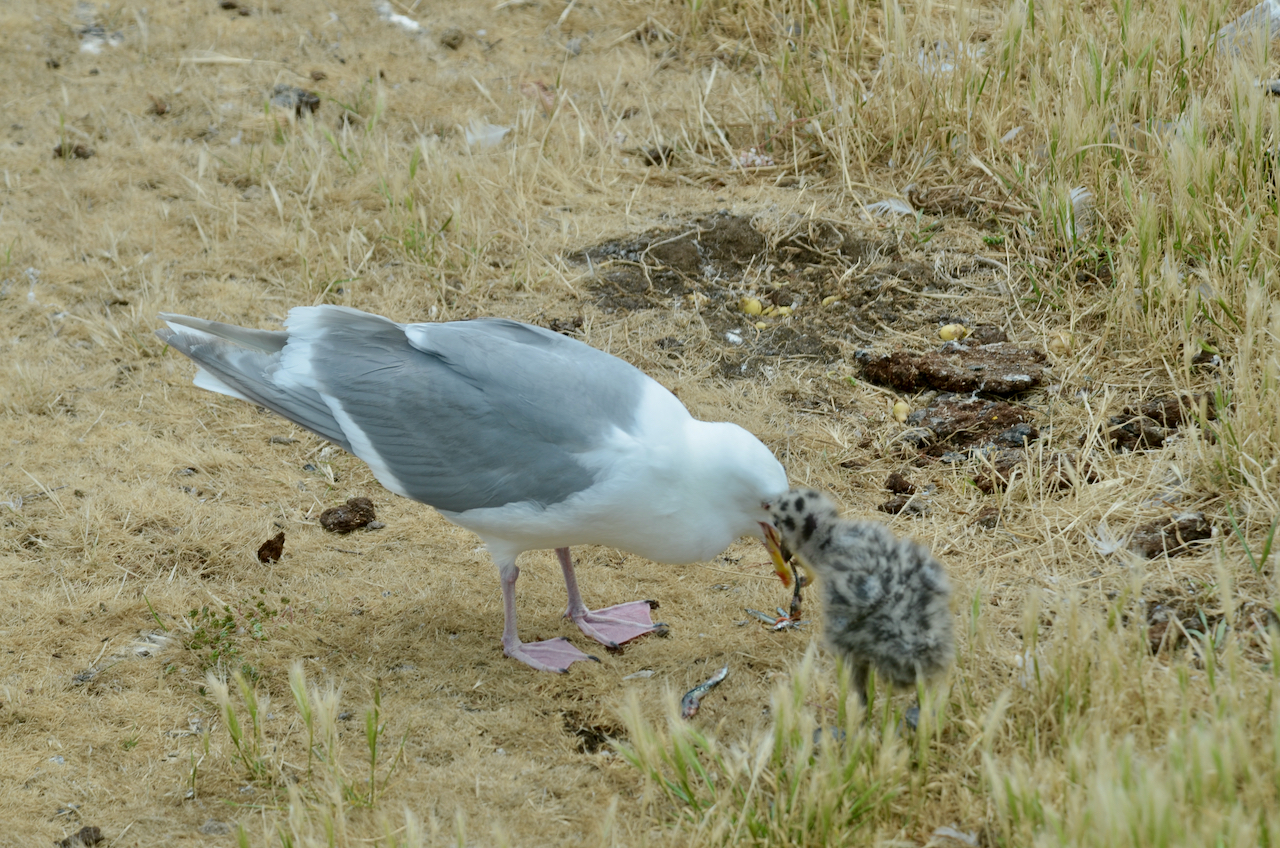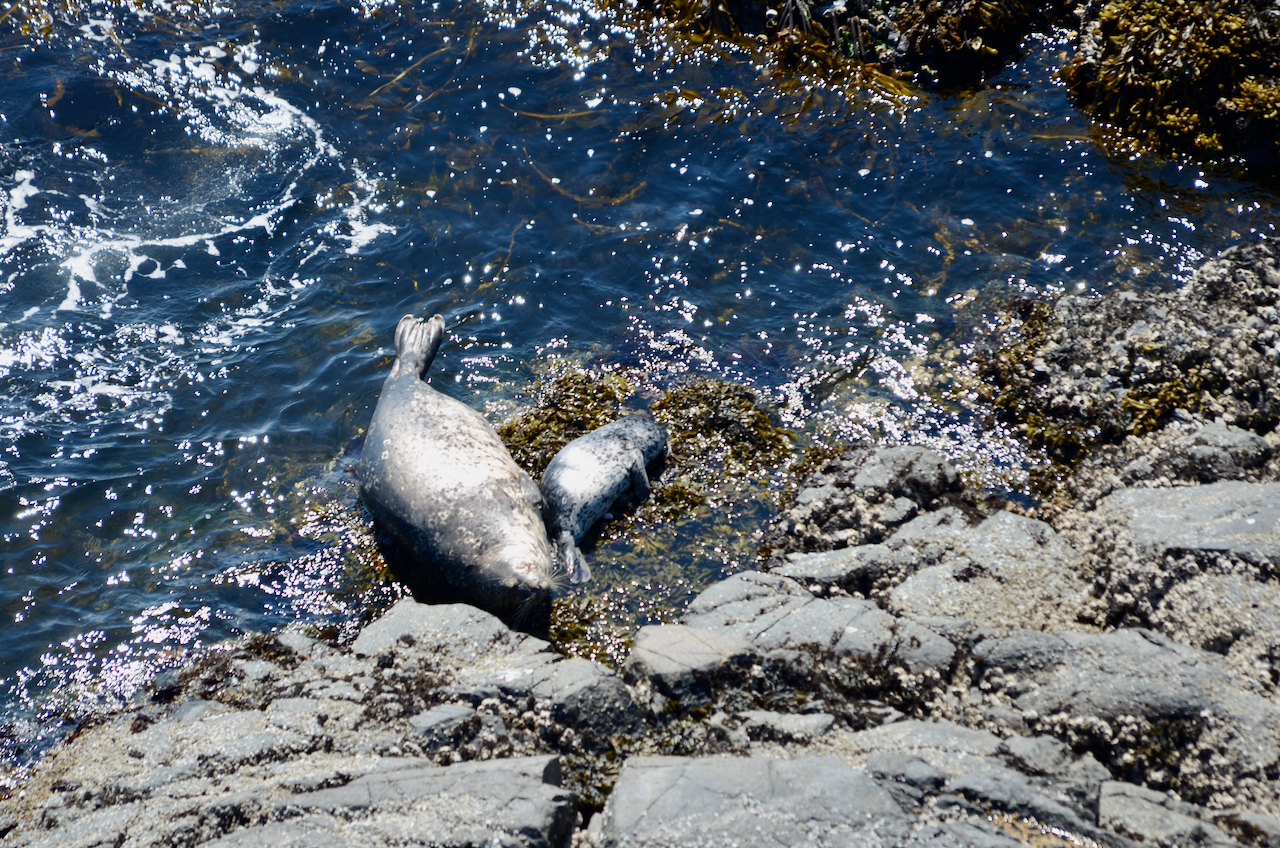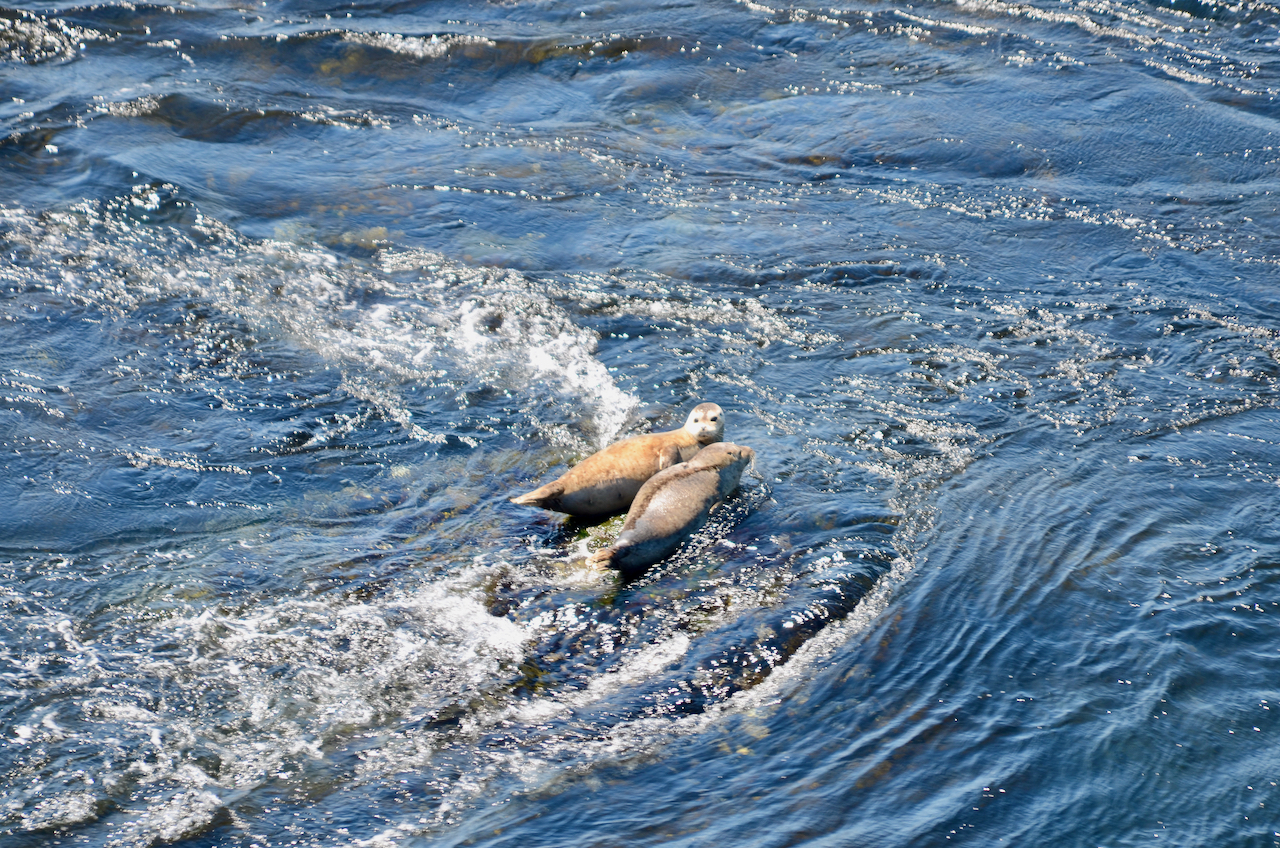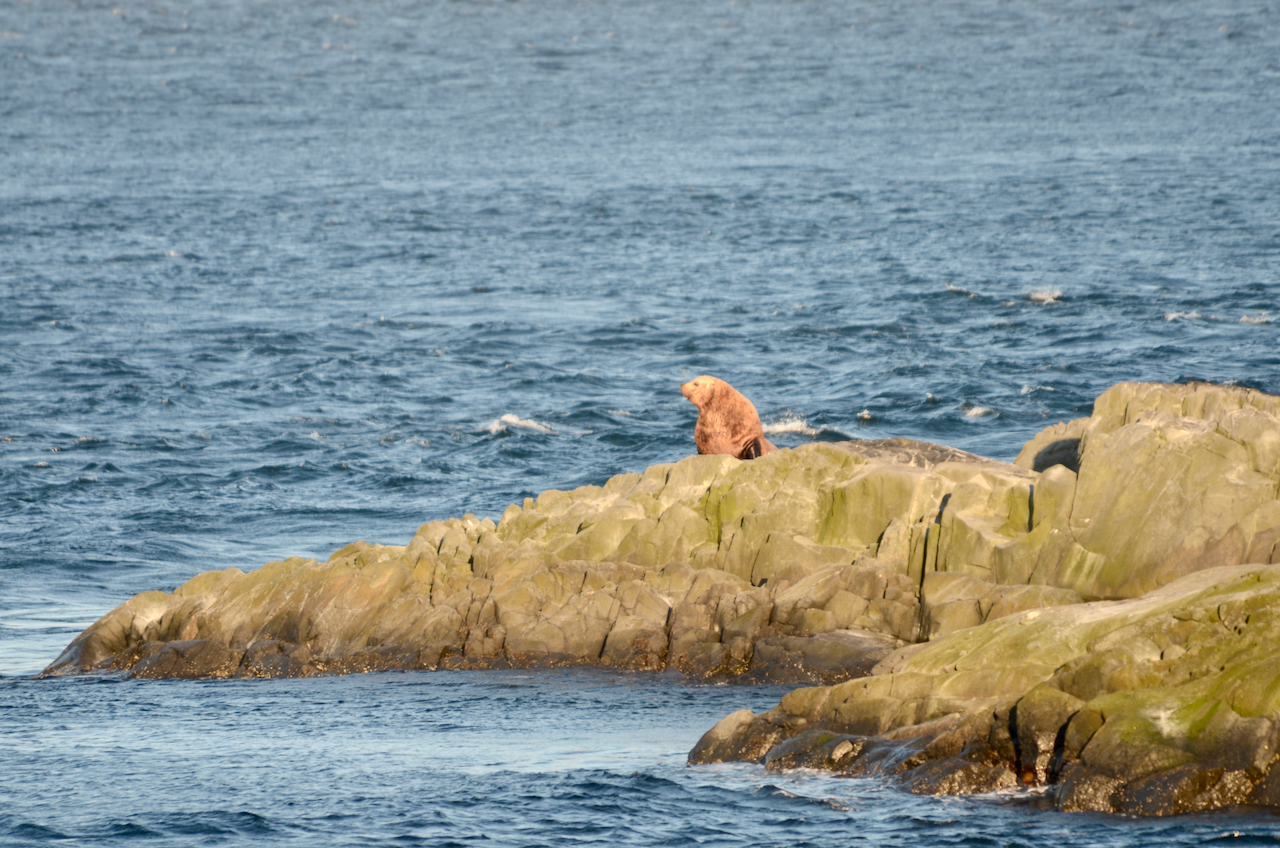Sat 7 October Allen & ilka Olsen, Eco Guardians 6 –13 Oct 2023
Warm, sunny, calm seas ~19
Another full day of ecotours beginning at 0715 plus recreational boaters, cruise ships, freighters. Sealions observed at
jetty in feeding frenzy at max flood—fabulous action. Tower count and on walkabout:
1 Harbour seal
Hundreds of sealions, gulls to be counted —to be counted for census.
7 Humpback whale
660 Cormorant — mostly Brant; some Double crested
4 Oystercatcher
8 Savahna sparrow
1 Black turnstone
3 Canda goose
Warm, sunny, calm seas ~19
Another full day of ecotours beginning at 0715 plus recreational boaters, cruise ships, freighters. Sealions observed at
jetty in feeding frenzy at max flood—fabulous action. Tower count and on walkabout:
1 Harbour seal
Hundreds of sealions, gulls to be counted —to be counted for census.
7 Humpback whale
660 Cormorant — mostly Brant; some Double crested
4 Oystercatcher
8 Savanah sparrow
1 Black turnstone
3 Canda goose
Category Archives: Ecoguardians Log
Animal Census Oct 6
Fri 6 October by Allen and ilka Olsen, Eco Guardians 6 –13 Oct 2023
Warm, sunny, calm seas. ~18C
Thank you to Greg and Cedric for this second opportunity to serve as eco guardians. Arrived at jetty to numerous
sealions not wanting to leave; much trepidation until Cedric showed us how to deal with them before he reviewed procedures and duties. Water tank filled from tank on Second Nature. Much ecotour activity due to sunny, warm Thanksgiving weather; cruise ships. Much whale spouting from humpbacks.
Count from tower:
270 Cormorants — mostly Brant
11 Black Turnstone
1 Surfbird
8 Harlequin duck
520 sealions (counted by Mark, outgoing guardian, on Great Race + islets)
It’s Sea Lion Season!!
Hey, look who’s back! I’ve been on Race Rocks since Saturday for a quick relief stint and will be heading back to the “Big Island” on Tuesday. This is my first trip to Race in September, and it’s very different from trips earlier in the season.
We are just about at the peak of songbird migration on Vancouver Island, so I was optimistic that I might see or hear more birds going over. The few birds on the ground have almost all been Savannah Sparrows. There was one raven here on Sunday, but other than that, no passerines seen or heard–yet.
Seabird activity has been off the charts outside of the marine protected area with reports of many jaegers, shearwaters, and of course, gulls of several species. Within the Race Rocks limits, it has been variable. Upon arrival on Saturday, I estimated more than 8,000 gulls in view, most of them California Gulls. There have been good numbers of Heermann’s Gulls, especially youngsters. The number of Glaucous-winged Gulls–the ones that breed on Race Rocks–are lower now that most of the young have dispersed. Despite scouring the flocks, I was unable to detect any less common gulls or the terns that have been spotted nearby. However, eight Brown Pelicans were nearby. They must have blown out with the wind on Saturday night! Since the grand welcoming, the gulls have spread out more throughout the area, often following the Humpback Whales and Orca that are keeping the growing number of ecotourism boats in business.
Pigeon Guillemots, one of the most abundant species earlier in the year, have moved offshore. They will spend the winter in their pale gray and white plumage, a startling contrast to the sharp black and white with bright red feet that we see here in the summer. The shorebirds that rested here each evening in July and August are largely gone, with just a few Black Turnstones, Surfbirds, and Black Oystercatchers onsite along with a few other stragglers. There was one species I missed in August that put in an appearance. Two Wandering Tattlers were here on Sunday and one posed for photos on Monday.
The population that has exploded since I was last here are the sea lions. California and Steller’s stacked like cordwood all around the outskirts of Great Race and the surrounding islands. It is quite clear that they would be at the door if it weren’t for a perimeter fence that (mostly) keeps them to the outer portion of the island. The work of a September ecoguardian is largely to keep the buildings and equipment zone sea lion free!
The days are getting shorter, and it feels like the winds are getting stronger. Winter is coming!
More photos from the last few days:
- Pelagic Cormorant
- Least Sandpiper
- Black Turnstones and Surfbirds
- Surfbird
- Whale watchers
- Pelagic Cormorants
- Sanderling and Least Sandpiper
- California sea lions
A Quick Week on the Rocks
A week goes by quickly out here! First, an update:
The branded Steller’s sea lion I reported in my last post has a history that includes a previous trip to Race Rocks. 746R was branded at Rogue Reef (Southern Oregon) on July 12, 2009. He has been all over Carroll Isl WA, Graves Rock SE AK, Castle Rock CA, Barkley Sound BC, Race Rocks in 2016, Sucia Island WA, Ewing Isl WA and Cape Arago OR as recently as July 7 this year. This and other marked sea lions are being studied by Susan Riemer of the Oregon Department of Fish and Wildlife. If you see marked sea lions, she really appreciates hearing about your sightings.
The last few days have had all of the weather possibilities for this time of year except hot. Foggy much of the time, windy most of the rest, and sometimes foggy and windy just to change things up. No rain, but humidity in the high 90s. I’m always struck by how different the temperatures can be just a couple of kilometres away. The wind yesterday actually broke the electric fencing tape on the jetty, which I fixed this morning.
Despite the wind, it’s been a good week for shorebirds. Another new one for me here (but not for Race Rocks) was a Sanderling. Normally seen chasing and being chased by incoming waves on a sandy beach, they do spend some time in more rocky environments.
The predominant gull at Race Rocks this time of year is the Glaucous-winged Gull. They are the regular breeders in this area. But gulls don’t necessarily stick to their own kind. When they hybridize with Western Gulls, the offspring are known as Olympic gulls. When they hybridize with Herring Gulls, the offspring are known as Cook Inlet Gulls. There is a gull that I’ve been watching that I think may be one of the latter.
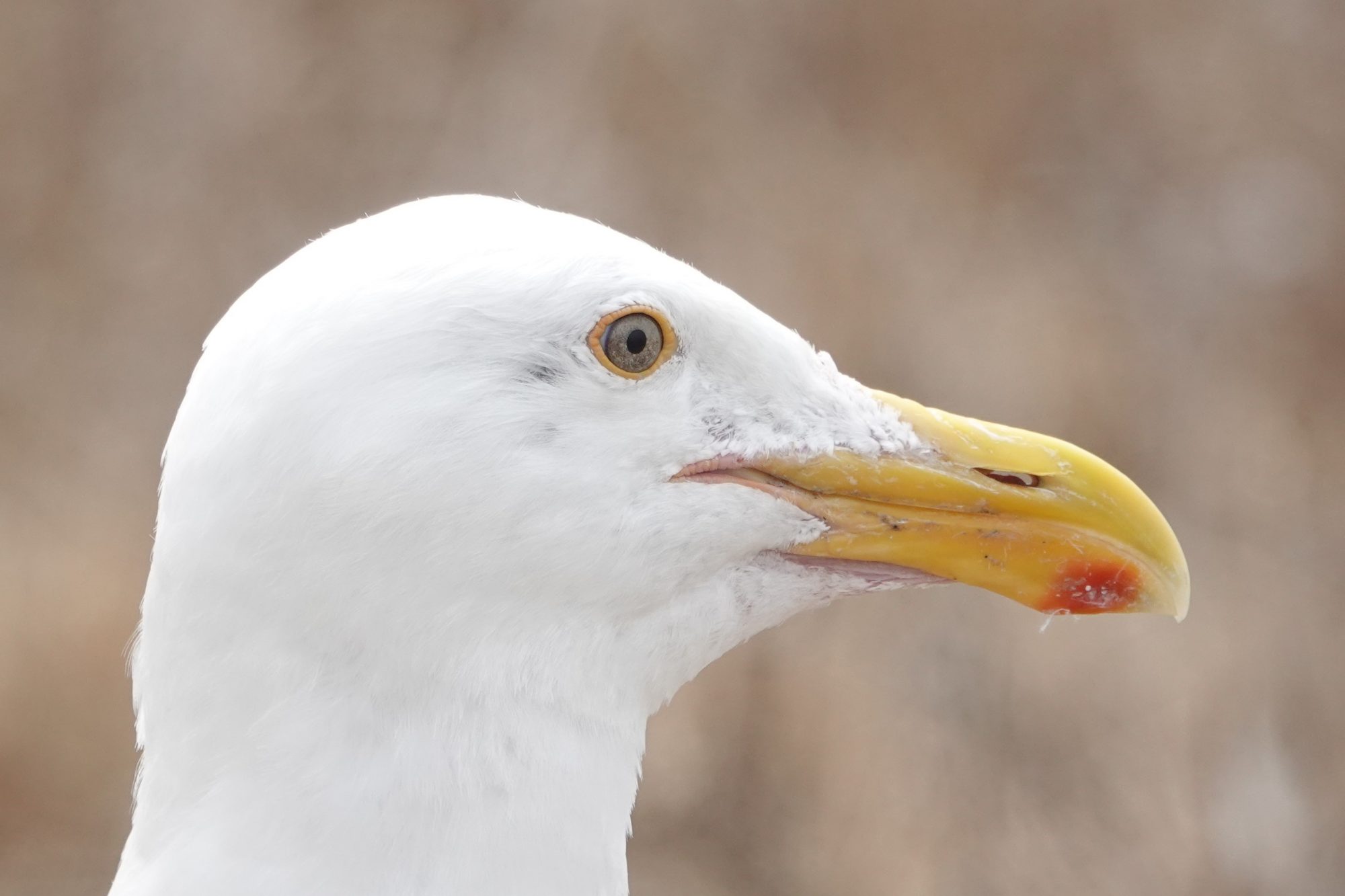
The orbital ring is orange-yellow like both the Western and Herring gulls. The iris is darker than a Herring gull and lighter than most Glaucous-winged Gulls.
I’ll be passing these and other photos on to someone more “gullible” than I am!
The Second Nature from Pearson College has been making the rounds with alumni and friends of the school. Some of them had to look hard to find us through the fog!
Thanks to Greg Dickinson and Pearson College for providing this opportunity to me again.
Visitors:
- No visitors ashore, but several from Pearson College on boat tours around the rocks
- Ecotourism traffic has been picking up, despite the fog.
Facility Work:
- Cleaned windows and solar panels daily
- Cleaned outbuilding windows inside and out
- Swabbed the decks at the Ecoguardian residence
- Fixed a shock-inducing break of the electric fence on the jetty
- Visually checked the entire run of the fence and reconnected tape blown out by high winds
More photos:
- Incoming Black Turnstone
- Turnstone being watched by harbour seal
- Black Turnstone stretch
- Pigeon Guillemot with a local gunnel (I think!)
- Steller’s sea lion
- Pigeon Guillemot with ???
- Gull from below. The dark wingtips indicate a hybrid rather than a full Glaucous-winged Gull
- No colour in the wingtips for this Glaucous-winged Gull
Aug 2 – Census surprises
One of the reasons for doing a weekly census is to put down in writing the numbers of mammals and birds that are actually in the reserve. This gives us the opportunity to compare the results, not simply rely on memory. And that’s a good thing! My impression on my return to Race Rocks is that there were a lot fewer gulls here than last year. A check of a census at a similar date in 2022 shows that not to be true. The numbers are actually very similar, but down about 15% from the same period in 2021. Census records the high counts of each species observed during the day. The marine mammals, for instance are best counted at low tide when most are hauled out. The adult gulls are at their highest numbers first thing in the morning and shorebirds gather on the east beach in late afternoon. Gull chicks can be counted anytime, but are usually undercounted because of their great hiding skills. In between, the census person watches for any other birds and animals that might show themselves.
Today’s census had several surprises apart from the number of gulls. While on the jetty, I thought I caught the flash of a bird in the corner of my eye. It was more than one. At least 3 swallows were feeding on insects in the small bay beside the jetty. I managed to get some bad photos, but good enough to identify two different Barn Swallows and one Violet-green Swallow. Later in the day, a Lesser Yellowlegs was resting with the other shorebirds, and a Parasitic Jaeger (also identified by bad photos) headed west not far off Great Race. An adult and juvenile Glaucous-winged Gull were out for a little swim. It always amazes me to see these youngsters in the water!
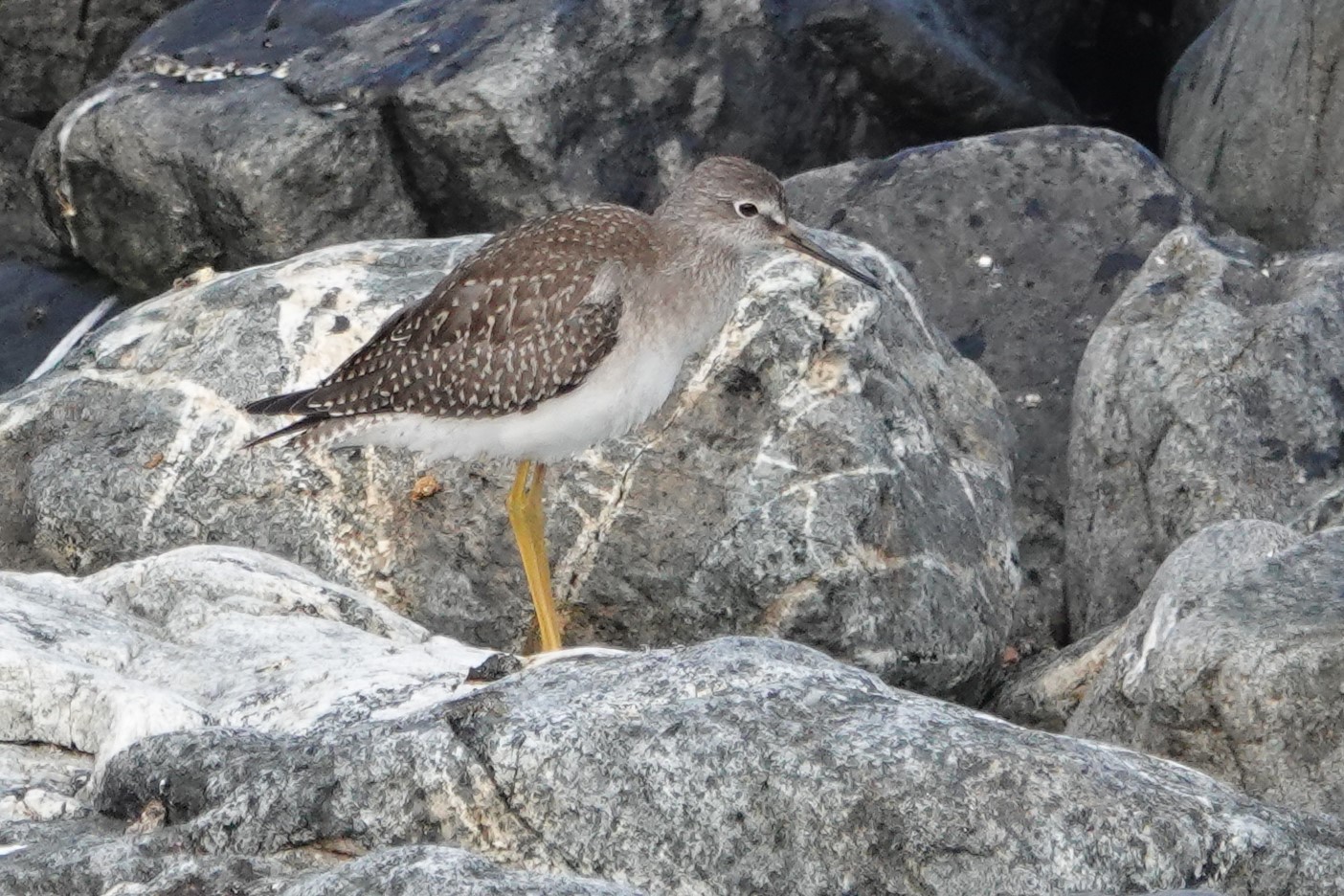
Lesser Yellowlegs, possibly the first documented for Race Rocks. First on eBird for the Race Rocks hotspot.
Among the sea lions today, I found one entangled with a fishing lure. This poor animal has been her for several weeks. Another had been branded for a research study. I’ll report this number to get its history.
More photos below!
Census, 2 August 2023
Birds
- Harlequin Duck 1
- Black Oystercatcher 23
- Ruddy Turnstone 1
- Black Turnstone 93
- Surfbird 24
- Western Sandpiper 2
- Short-billed Dowitcher 2
- Lesser Yellowlegs 1
- Parasitic Jaeger 1
- Pigeon Guillemot 83
- Heermann’s Gull 2
- Western Gull 1
- California Gull 120
- Glaucous winged Gulls 332 adults, 237 juvenile
- “Olympic” Gull 3 adults 3 juvenile
- Brandt’s Cormorant 7
- Pelagic Cormorant 2
- Violet-green Swallow 1
- Barn Swallow 2
- Brown-headed Cowbird 2
Mammals
- Harbour seal 195
- Northern (Steller’s) sea lion 79
- California sea lion 7
- Sea otter 1
Visitors:
- No visitors
- Ecotourism traffic has been slow. Several boats a day, but rarely more than one in the area at a time
Facility Work:
- Cleaned windows and solar panels
- Replaced batteries in smoke, CO alarm in Student House
More photos:
- Barn Swallow feeding at the jetty
- Western Sandpipers
- Ruddy Turnstone
- Parasitic Jaeger
- Ollie at his station
- The youngest gull on the island
- Brandt’s Cormorant
- Harbour seal and pup
- Feed me. Now. Glaucous-winged Gull chick
- Black Oystercatchers
- Young Black Oystercatcher
- Oystercatchers at dusk
- Sea lion haulout
- More Glaucous-winged Gulls
** All wildlife photos taken at safe distances with high-powered zoom, and may be cropped to improve detail! **
What a difference a couple of months makes!
Just two months ago, my arrival was met with uncountable numbers of flies and hundreds of Glaucous-winged Gulls building and tending to their nests, many with eggs. While there are still a few nests, most of the gulls are now divided into territories with adults and associated young. It seems to me that there are fewer pairs here now than there were in June, and considerably fewer than there were a year ago at this time. The census on Wednesday should tell an interesting story.
Overall, my impression is fewer gulls, fewer guillemots, fewer mammals (no elephant seals) and many, many fewer flies than the last two Augusts. Fewer gulls means bigger territories, less bickering and fewer mortalities. I have been here two full days and have only seen one dead young gull. This contrasts sharply from the last two summers when there were many remains in the colony — a perfectly normal state of affairs. Perhaps lower productivity has meant an increase in chick survival this year.
The Western Gull I mentioned in an earlier post has produced three young. The adult pair consists of the Western and an “Olympic” gull. Olympic Gulls are a blend of Western and Glaucous-winged Gulls. I believe the Western of this pair is the female, but since both parents provide egg incubation and chick care, I am not certain.
The Barn Swallows that arrived on Race Rocks this spring definitely built a nest. With them gone now, I crept into the space where they had been going and located it. It’s a wonderful nest, but there are considerably fewer droppings beneath it than I expected. I think that it may have failed. It should be left in place, though, as swallows usually return to their nests and get a head start in subsequent years. A single nest can take 600 mouthfuls of mud to create. That’s a lot of work for small birds.
Passerine numbers are small as usual. The only songbird species I have seen so far this week is Brown-headed Cowbird, with up to five gathering in a small flock. The fact that they find each other still amazes me. How do they know they are cowbirds? As a brood parasite, all Brown-headed Cowbirds are raised by other species.
Perhaps the biggest news of the week happened before I arrived. Derek Sterling, a Race Rocks ecoguardian spending his summer guiding on Eagle Wing boats which frequently come out to Race Rocks called last weekend with the news that there was a mother sea otter with a pup just off the islands. This is fantastic, possibly a first for the area in more than 100 years! I haven’t managed to see them, but Ollie is perched in his usual spot in the kelp.
The shorebird beach in the East Bay is active in the late afternoons, with many Black Turnstones and Surfbirds, the resident Oystercatchers and a few special guests. Since my arrival, I have seen up to four Short-billed Dowitchers, one Ruddy Turnstone, one Western Sandpiper, and one non-shorebird, a Harlequin Duck, hunkered down out of the wind there.
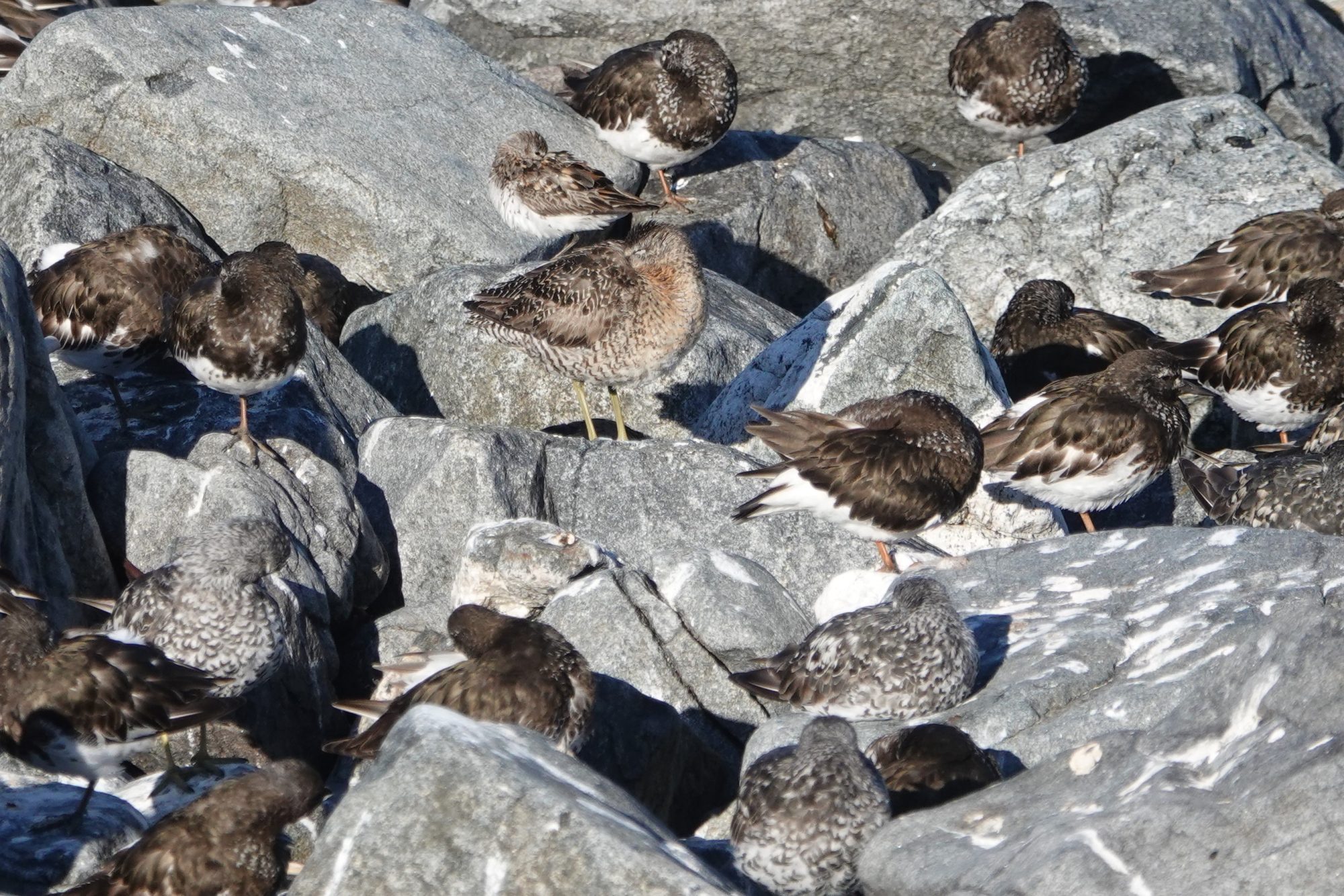
Four species of shorebirds: Black Turnstone, Surfbird, Western Sandpiper, and Short-billed Dowitcher
And speaking of the wind—could someone please turn it down? Although the mornings have started out with moderate winds, by early afternoon they have increased to the level of unpleasantness, and by evenings, I feel like I am getting a taste of what winter must be like out here!
I’m here earlier in August than I have been the last couple of years, so things are understandably a little different. Wednesday’s census should tell a more complete story.
Maintenance:
Daily maintenance includes washing all the solar panels and the windows that have taken the brunt of gulls flying by. With the winds this week, this is a considerable task!
Weather – Current:
http://www.victoriaweather.ca/current.php?id=72
Weather – Past:
July 22 and 23 – End of Shift
Weather for July 22:
Wind: W 11 to 34 knots
Visibility: <1-15 NM
Sky: Foggy in morning, Partly Cloudy after 09:00
Sea: rippled in morning, up to 2′ chop in afternoon
Air temperature: 12-18 C
Weather for July 23:
Wind: W 12 to 32 knots
Visibility: <1-15 NM
Sky: Fog patches in the morning, Partly Cloudy after noon
Sea: up to 1′ chop in morning, up to 3′ chop in afternoon
Air temperature: 12-16 C
Maintenance:
I did the routine tasks of cleaning the solar panels and house windows, topping up the water in the 24 deep cycle batteries, fixing the electric fence, sampling the salinity and temperature of the seawater, and running the desalinator with solar power to produce freshwater.
End of Shift:
I have enjoyed reacquainting myself with Race Rocks over the past two and a half weeks. The solar power was a sufficient source of energy each day to charge the batteries, power the island, and produce freshwater from the desalinator. I got out in the station boat, which is always a highlight to see the island from the perspective of a sea lion. Most importantly, for the second summer in a row I learned to live harmoniously with the very territorial nesting gulls.
This is my sixth shift I have done as Ecoguardian over the past nine years, for a total of almost nine months. My shifts have ranged from two weeks to four months. I have visited here in ten months of the year, with the exception of June and September.
Tomorrow I am heading home to Vancouver to get ready for two weeks in the Northwest Territories, where I will be canoeing in Nahanni National Park Reserve.
I look forward to returning to Race Rocks sometime soon to explore the familiar sights, sounds, and smells of this amazing place.
Photo highlights from the past two days:
- Wispy evening clouds over Olympic National Park, in Washington.
- 30 sea lions on Middle Rocks on July 23. They are mostly Steller sea lions with a few California sea lions mixed in there. The numbers of sea lions have been climbing steadily over the past few days.
- Two harbour seal mothers and their pups
- A mother harbour seal and her pup hauled out on South Seal Rocks
- Pigeon guillemot with an eel
- Gull chicks
- Gull chicks
- This photo of a bird’s-eye view of the island was taken by Nick Townley on March 25, 2022, when he flew over Race Rocks in a Coast Guard helicopter on a return trip from a relief lightkeeper shift up the coast at Pachena Point. Derek, the Ecoguardian, and Greg, the Seafront Coordinator, are on the jetty with the boat Second Nature.
- This photo was taken by Nick Townley from a Coast Guard helicopter on March 25, 2022. All the islands of Race Rocks can be seen looking from the west. From left to right the island are: West Rocks, North Rocks, Turbine Rock, Middle Rocks, Great Race Rocks, South Seal Rocks, and South Islands.
July 17-21 and Weekly Census
Weather for July 17:
Wind: W 14 to 34 knots
Visibility: <1-15 NM
Sky: Partly Cloudy
Sea: rippled in morning, up to 3′ chop in afternoon
Air temperature: 13-17 C
Weather for July 18:
Wind: W 9 to 25 knots
Visibility: 15 NM
Sky: Partly Cloudy
Sea: rippled in morning, up to 2′ chop in afternoon
Air temperature: 11-14 C
Weather for July 19:
Wind: W 6 to 27 knots
Visibility: 15 NM
Sky: Partly Cloudy
Sea: rippled in morning, up to 1′ chop in afternoon
Air temperature: 12-17 C
Weather for July 20:
Wind: W 21 to 40 knots
Visibility: <1-15 NM
Sky: Foggy in early morning, Partly Cloudy after 10:00
Sea: rippled in morning, up to 4′ chop in afternoon
Air temperature: 12-20 C
Weather for July 21:
Wind: W 19 to 40 knots
Visibility: 5-15 NM
Sky: Partly Cloudy
Sea: rippled in morning, up to 3′ chop in afternoon
Air temperature: 12-14 C
Maintenance:
I did the routine tasks of cleaning the solar panels and house windows, topping up the water in the 24 deep cycle batteries, fixing the electric fence, tidying, testing the salinity and temperature of the seawater, maintaining the freshwater system, and running the desalinator with solar power to produce fresh water.
Visitors:
I drove the Race Rocks station boat to pick up a friend, who came for the night of July 18. Brad had visited Race Rocks before when we both worked for many summers on campus as coordinators for PSYL (Pearson Seminar on Youth Leadership).
Weekly Census observed on July 20:
Steller sea lion: 14
California sea lion: 1
harbour seal: 124
cormorant: 5
black oystercatcher: 24 adults, 2 chicks
pigeon guillemot: 162
glaucous-winged gull: 396 adults, 147 chicks
surfbird: 30
black turnstones: 87
western sandpiper: 4
Photo highlights from the past five days:
- Periwinkle shells piled up in the Jetty Bay
- View of Race Rocks from the station boat approaching on the return trip from Pedder Bay
- View of Race Rocks from the station boat approaching on the return trip from Pedder Bay
- Pigeon guillemot with a freshly caught eel meal
- Another pigeon guillemot with a freshly caught sculpin fish meal
- A Canadian Navy warship heads south towards Puget Sound, with the volcano Komo Kushan (Mt Baker) in the background.
- A lone California sea lion hauled out on the south side of the island
- Male Steller sea lions gather on Middle Rock
July 14-16
Weather for July 14:
Wind: W 15 to 30 knots
Visibility: 15 NM
Sky: Partly Cloudy
Sea: rippled in morning, up to 3′ chop in afternoon
Air temperature: 11-13 C
Weather for July 15:
Wind: W 12 to 35 knots
Visibility: <1 to 10 NM
Sky: Fog for most of the day, with some patches of Partly Cloudy in afternoon
Sea: rippled in morning, up to 4′ chop in afternoon
Air temperature: 10-15 C
Weather for July 16:
Wind: W 19 to 38 knots
Visibility: 10-15 NM
Sky: Partly Cloudy
Sea: 2′ chop in morning, up to 4′ chop in afternoon
Air temperature: 11-17 C
Maintenance:
When the solar panels were producing a lot of power on July 14 and 15, I used the desalinator to make a total of 700 litres of water. The output of the desalinator is 1.25 L per minute. It takes about 2.6 kW of energy to run the desalinator, on top of the regular 1.2 kW load of the island.
Today I lowered the boat into the water to grease the boat trailer wheels as well as finish installing and testing the new boat GPS and sonar.
Photo highlights from the past three days:
- The tagged juvenile male elephant seal left the island at some point before the morning of July 15. Over the past week, most days I saw him on the boat ramp.
- Blood star seen at low tide
- Fogged in southern view from the back porch of the house on July 15, when it was foggy for most of the day. The fog signal is the white pillar near the lower left of the photo. When foggy, it emits three high pitched sounds once a minute.
- Turning seawater and solar power into freshwater at a rate of 1.25 litres per minute.
- Lowering the boat down the boat ramp from the boathouse to the jetty.
July 11, 12, 13, and Weekly Census
Weather for July 11:
Wind: W 11 to 27 knots
Visibility: 15 NM
Sky: Partly Cloudy
Sea: rippled in morning, up to 2′ chop in afternoon
Air temperature: 12-14 C
Weather for July 12:
Wind: W 18 to 35 knots
Visibility: 10 to 15 NM
Sky: Cloudy in morning, partly cloudy in afternoon
Sea: 1’ chop in morning, up to 4′ chop in afternoon
Air temperature: 11-15 C
Weather for July 13:
Wind: W 16 to 33 knots
Visibility: 15 NM
Sky: Partly Cloudy
Sea: rippled in morning, up to 2′ chop in afternoon
Air temperature: 11-15 C
DND Blasting:
There was one DND blast at 14:05 on July 12 at nearby Rocky Point.
Visitors:
Greg and Bruce visited this afternoon to deliver 1,400 L of freshwater and a new first aid kit.
Maintenance:
I did the routine tasks of cleaning the solar panels and house windows, topping up the water in the 24 deep cycle batteries, fixing the electric fence, tidying, and maintaining the freshwater system.
Ecological notes:
There have been a lot of humpback whale activity over the past few days to the west, south, and east of Race Rocks. The whale watching boats have been active in the area. From what I hear on the VHF radio, they have been very pleased with the humpback viewing. I have not seen any whales swim through the ecological reserve.
I heard back about the tagged elephant seal, from the researcher at Año Nuevo Natural Reserve, in California. The juvenile seal, tagged H999 and K646, is a male who was born in January 2022. He was previously observed here and reported to the researchers on April 1, 2023. He has been moulting here for at least the past several weeks. He appears to be almost complete the moulting process, so he might be moving on soon to feed in the deep waters.
Weekly Census observed on July 13:
elephant seal: 1 juvenile (tagged H999, K646)
Steller sea lion: 3
harbour seal: 79
bald eagle: 2 adults, 1 juvenile
raven: 1
cormorant: 7
black oystercatcher: 6 adults, 1 chick (that I could spot today)
pigeon guillemot: 148
glaucous-winged gull: 387 adults, 120 chicks
surfbird: 12
killdeer: 4
western sandpiper: 3
barn swallow: 3
Photo highlights from the past three days:
- Humpback whale surfaces close to a whale watching boat. Looking northeast from Race Rocks, Esquilmalt can be seen in the background.
- Whale watchers get a good view of a humpback pectoral fin. Victoria is in the background.
- Humpback whale pectoral fin with Trail Island Lighthouse in the background.
- The ecoguardian house at magic hour, as I came back from the daily seawater sampling. Can you spot the elephant seal in the middle left portion of the photo?
- The solar panels were producing a whopping 6.03 kW at 3:00 yesterday afternoon. The capacity of the solar array is 7 kW.
- Oystercatcher chick and parent on the eastern side of the island. This is the only photo evidence I have of an oystercatcher chick from the past week. I have seen a few more through binoculars.
- Regurgitated lunch for a gull chick
- Harbour seal mother and pup
- A pair of harbour seals hauled out surrounded by a strong current near the South Seal Rocks.
- A lone male Steller sea lion in the evening glow on the South Islands.
